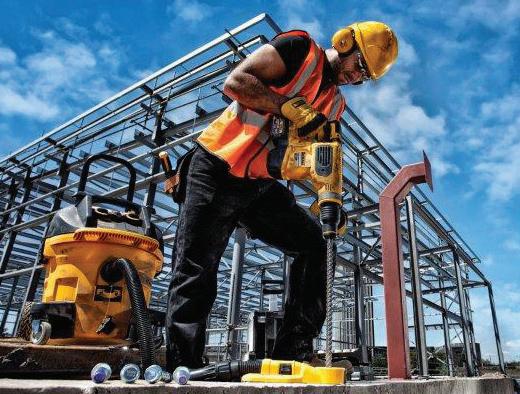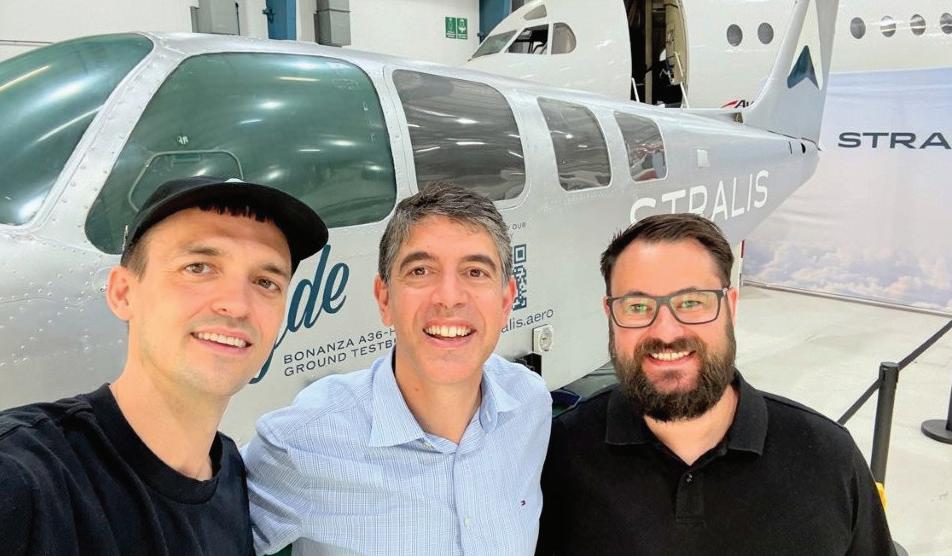


SMART
MANUFACTURING
‘Tech bro’ culture stifling startup sector.

SMART MANUFACTURING
How Industry 5.0 is redefining manufacturing.

SOUTHMACH 2025
Manufacturing fuels the present.


THE LAST WORD
The Skills Shortage Smokescreen. 12 13 15




MANUFACTURING
‘Tech bro’ culture stifling startup sector.

How Industry 5.0 is redefining manufacturing.

SOUTHMACH 2025
Manufacturing fuels the present.


THE LAST WORD
The Skills Shortage Smokescreen. 12 13 15
By Ben Speedy, ASB’s General Manager Commercial Banking and Business Strategy
In February this year, the New Zealand Government released ‘Going for Growth’, setting out its approach to enable economic growth, to deliver more jobs, higher incomes and money to invest in services like healthcare, education, and infrastructure. Put simply, the current Government is focused on lifting New Zealand’s productivity and rightly so.
Productivity in NZ has been steadily falling behind other OECD countries as we have struggled to lift the value of the goods we export.
We are a country of small to medium-sized, often family-owned businesses and, contrary to popular belief, our businesses mainly focus on domestic rather than export markets.
Unlocking productivity is essential to help us scale growth and enable greater redeployment of resources into high value products and services.
In recent years, primarily due to economic environment and immigration settings, productivity has largely focused on addressing cost challenges and labour issues. However, if we want to succeed as a country, we must turn our focus to growth.
Our research with the New Zealand Institute of Economic Research (NZIER) has found that investing in innovation now will unlock benefits and choice for NZ, with the potential to raise real GDP to $500 billion by 2045.
NZ Manufacturing is pivotal to our success, but we must continue to evolve, focusing not only on producing high value products, but leveraging new technology, and creating unique IP to enable us to

compete on the world stage.
Work undertaken by economist Richard Fabling for the Productivity Commission found that firms operating at their respective industry frontiers, invest twice as much capital to improve productivity and generate three times the revenue per worker.

Banks have a very important role to play. Interestingly, our research with NZIER indicated that while competitive lending was critical, capacity to borrow was the more significant consideration for investment.
Relative to NZ, small advanced economies have greater access to capital, more active capital markets, and greater willingness of firms to leverage capital outside bank debt.
Banks therefore need to support businesses improve their capacity to borrow and provide innovative solutions to support growth.
Banks can help businesses to consider the right form of capital to support growth and take appropriate leverage to manage risk and reward.
With NZ’s economic recovery in motion, supported by easing inflation, lower interest rates and stronger
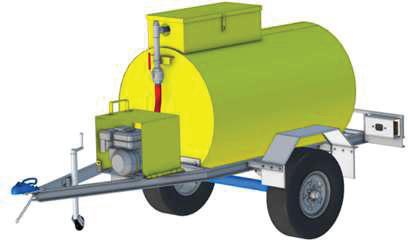



exports, we think now is a good time for businesses to be investing in capital.
According to ASB’s economists, we can expect a more pronounced recovery in the latter half of 2025, as lower interest rates steadily boost domestic activity.
For businesses, capital investment in machinery, technology, buildings, and processes is not just a financial decision; it’s a strategic move towards future-proofing operations.
By channelling resources into capital, businesses can leapfrog from traditional, labour-intensive practices to more efficient, technology-driven processes.
Buckley Systems, a manufacturer of precision electromagnets and vacuum chambers, is a great example of a company that has seen the importance of investing in automation and technology to lock in future growth.
continued on Page 11



Secure supply of energy and data to moving industrial equipment.
• Large size range
• Vertical travels
• Energy tubes

• Hygienic chains
• Solutions for long travel
• Guide troughs
• Readychain
• Robotic, 3D
• Circular movement

HUGE range of high quality flexible cables
• Control cables
• Single cores
• Data cables
• Sensor/Actuator
• Intrinsically Safe
• VSD/EMC cables
• Halogen Free cables
• High temperature
• Harsh Conditions
• Crane cables
• Profibus cables
• Bus/DeviceNet
• Solar cables
• Instrumentation
• Flat cables
• Curly cords

Largest range of flexible conduits for cable protection
• Conduits
• Conduit fittings
• Divisible systems
• Jumbo systems
• Conduit Accessories
• Braided cable protection
• Fire barrier solutions
• Food and beverage
• EMC systems
• Ex, ATEX, IEC EX

Industrial connectors for many industries
• Rectangular multipole connectors from ILME
• Single pole Powerline connectors from TEN47
• EPIC connectors from Lapp Group
• M23 circular connectors from Hummel
• Circular connectors specifically for the entertainment/stage lighting industry from Socapex

Safety engineering solutions from EUCHNER
• Multifunctional Gate Box MGB
• Transponder-coded safety switches
• Electromechanical safety switches
• Magnetically coded safety switches

Sensor technologies for automation
• High-Precision Laser Distance Sensors
• Ultrasonic Sensors
• Inductive Sensors
• Fluid Sensors

We invite you to attend the

In conjunction with SouthMACH 2025 - May 28, 2025 – Wolfbrook Arena, Addington, Christchurch For our conference this year we are taking a different approach. The primary target audience will be operational leaders – operations, production and manufacturing managers, but also, and quite specifically, team leaders – especially those with ambitions to take on greater responsibility. That doesn’t mean top-level managers and business owners aren’t welcome, but substance and form of the conference programme will be tailored to engage with the
target audience. What that means:
• Emphasis on contributions ‘from the coal face’ – war stories from those with scars on their backs
• Emphasis on tangible outputs –what worked, what didn’t, and what are the measurable results?
• Most presenters will have been directly involved in the work they will report on
• We’ll create opportunities and encourage the audience to interact with the presenters throughout each session. For our workshops we have chosen three related topics:
1 Leading through change, keeping hearts and minds onboard
2 Improving productivity through raising levels of engagement
9:00 – 10:00 SouthMACH
3 Using digital tools to improve productivity on the shop floor Investment – includes catering and Social Hour function:
• Top-tier leaders (MD/CEO/GM): $485+GST
• Tier-2 leaders (operations, production, manufacturing managers, etc) $340+GST
• Tier-3 leaders (team leaders and equivalent) $220+GST
• Full Paid-up members of MAKE│NZ receive a 15% discount on the above – click here to register
• For more than four registrations per company, please contact us for a special offer: dieter@makenz.org
SouthMACH opens at 9 a.m. – Feel free to come in early and see the exhibits at SouthMACH 9:00 – 10:00 Check-in and day registration
10:00 – 10:10 MC
Theme 1: Leading through change
10:10 – 11:10 Rebecca Phillips & Ben Rae (Comfort Group)
11:10 – 11:40 Tony Smale (FORTÉ Management)
11:40 – 12:10 Panel discussion – Convenor: Natalie Smith (Kiwicare)
12:10 – 13:00
Theme 2: Raising levels of engagement
13:00 – 13:30 Lucien Thiele & Natalie Smith (Kiwicare)
13:30 – 14:00 Sara Ogier & Michael Anderson (Wyma Engineering)
14:00 – 14:30 John Eatwell (Strategic People Group)
14:30 – 15:00 Panel discussion – Convenor: Rebecca Phillips (Comfort Group)
15:00 -15:20
Theme 3: Making the boat go faster
15:20 – 16:20 Aaron Haines (Energyline) Nathan Hay (Argus ManuTech)
16:20 – 16:50 Carl Broxup, (CHC Engine Centre)
16:50– 17:20 Panel discussion – Convenor: Ben Bainbridge, CHCEC
Welcome and introduction
The Comfort Group is in the middle of a major move -shifting its operations from Auckland to Ohinewai (Waikato). Ben & Rebecca will share their experience with managing that transition
Motivating people – how to get it right in different cultural contexts
On the Panel: Natalie, Rebecca, Ben and Tony
Lunch Break and ability to see the exhibits at SouthMACH
Improving engagement at all levels – how we got that to work, and what the impacts on our business are
Achieving and maintaining high levels of genuine engagement – the Wyma experience
Engagement. What is it really about?
On the Panel: Rebecca, Lucien and Natalie, Sara and Michael, John
Afternoon Tea and networking (with presenters)
Argus and Energyline have both recently put a lot of effort into adopting digital tools that help them to improve productivity. They will share how they got there, and what mistakes to avoid
Getting ERP to work with lower-level manufacturing process management software – we FINALLY got it to work!
On the Panel: Aaron, Ben, Carl & Nathan
17:20-17:30 MC Wrap Up
17:30- 18:30
Social hour – Drinks and Nibbles
Unlocking business growth
BUSINESS
The art of investment.
Why banking competition matters. Ransomware incidents highlight security blind spots.
EMA
Is New Zealand’s Health and Safety reform enough to prevent workplace harm?
SMART MANUFACTURING
‘Tech bro’ culture stifling startup sector. Hydrogen electric flight prepares for lift off in New Zealand.
How Industry 5.0 is Redefining Manufacturing.
Remanufacturing 101: Reviving parts, reclaiming value.
SOUTHMACH 2025
Manufacturing fuels the present.
ANALYSIS
Navigating the tariff maze.
SUSTAINABILITY
Double materiality: What it is and why it matters to manufacturers.
TRAINING
How learning drives manufacturing performance.
WORKSHOP TOOLS
Alfa Laval expands hygienic valve portfolio. Clad composite wire combines multiple properties.
Acoustic imaging camera locates smaller compressed air leaks faster.
ANALYSIS
Article 2: The Crucial Role of System Integrators in Industry 4.0 and Automation. Manufacturing sector doing a lot.
DEVELOPMENTS
Engineering: the invisible high-demand career.
THE LAST WORD
The Skills Shortage Smokescreen.



Ian Walsh Ian Walsh is a leading expert in designing and implementing transformational improvement programmes, with over 30 years of experience helping businesses drive operational excellence and long-term success. A Six Sigma Master Black Belt, he has worked with both New

Zealand’s top organisations and global multinationals including Kimberley Clark, Unilever, Guinness to unlock productivity, reduce costs, and optimise business performance. Ian has been at the forefront of operational improvement, working at all levels—including Boards—to deliver high-impact change. Ian continues to play a key role in advancing business excellence, supporting Auckland University and The Icehouse with expert insights on productivity, operational improvement, and best-practice methodology.

Dr Barbara Nebel CEO thinkstep-anz
Barbara’s passion is to enable organisations to succeed sustainably. She describes her job as a ‘translator’ – translating sustainability into language that businesses can act on.



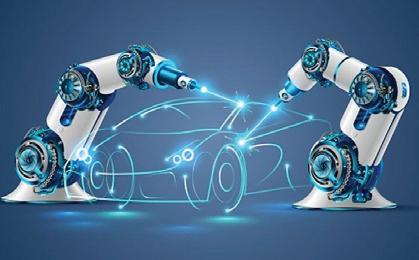
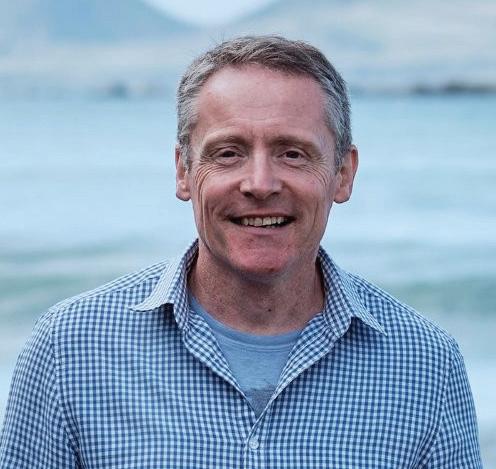
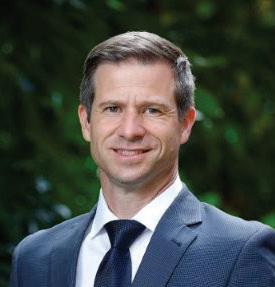
Mark Devlin
Having owned food manufacturing and distribution businesses for a decade, Mark Devlin now runs Auckland public relations agency Impact PR. Mark consults to several New Zealand manufacturing firms including wool carpet brand Bremworth, aircraft exporter NZAero and cereal maker Sanitarium.
Errey
Insa’s career has been in the public and private sectors, leading change management within the energy, decarbonisation, and sustainability space. Insa holds a Chemical and Biomolecular BE (Hons) from Sydney University. She is a member of the Bioenergy Association of NZ and has a strong passion for humanitarian engineering, working with the likes of Engineers Without Boarders Australia.
Insa is a member of Carbon and Energy Professionals NZ, been an ambassador for Engineering NZ's Wonder Project igniting STEM in Kiwi kids and Engineers Australia Women in Engineering, increasing female participation in engineering.


Jane Finlayson is Head of Advanced Manufacturing at the EMA, and has 25-years’ experience in business and economic development. She is passionate about empowering businesses to grow, innovate and embrace Te Ao Māori.
Copyright: NZ Manufacturer is copyright and may not be reproduced in whole or in part without the written permission of the publisher. Neither editorial opinions expressed, nor facts stated in the advertisements, are necessarily agreed to by the editor or publisher of NZ Manufacturer and, whilst all efforts are made to ensure accuracy, no responsibility will be taken by the publishers for inaccurate information, or for any consequences of reliance on this information. NZ Manufacturer welcomes your contributions which may not necessarily be used because of the philosophy of the publication.

PUBLISHER
Media Hawke’s Bay Ltd, 121 Russell Street North, Hastings, New Zealand 4122.
MANAGING EDITOR
Doug Green
T: 027 625 6166
E: publisher@xtra.co.nz
CONTRIBUTORS
Holly Green, EMA,
Business East Tamaki, Ian Walsh, Adam Sharman, Mark Devlin, Nicholas Russell, Jane Finlayson, Chris Penk, Paul Jarvie, Frank Phillips, David Altena, Rob Bull, Ben Speedy
ADVERTISING
T: 027 625 6166
E: publisher@xtra.co.nz
DESIGN & PRODUCTION
:kim-jean:
E: kim.alves@xtra.co.nz
WEB MASTER
Julian Goodbehere
E: julian@isystems.co.nz
PUBLISHING SERVICES
On-Line Publisher
Media Hawke’s Bay Ltd
DIGITAL SUBSCRIPTIONS
E: publisher@xtra.co.nz
Free of Charge.
MEDIA HAWKES BAY LTD
T: 027 625 6166
E: publisher@xtra.co.nz
121 Russell Street North, Hastings NZ Manufacturer ISSN 1179-4992
Vol.17 No.3 April 2025

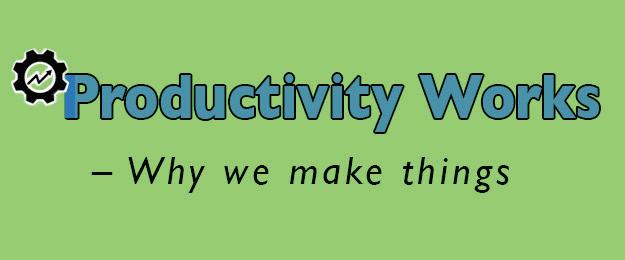
The future of manufacturing is with us every day. We plan for it, living in the present, making things, being innovative, maximising the opportunities…for tomorrow.
Some of these opportunities may materialise for you if you are visiting SouthMACH 2025 in May, sharing stories and experiences with your peers who are there to listen to speakers and observe the latest in technology, products and services that may assist in enhancing your business performance.
The first of our two SouthMACH 2025 Previews is on Page 15 of this issue.
Recent regulatory changes by the Reserve Bank of New Zealand (RBNZ) may mark the beginning of a new era - one where increased banking competition and AI-driven financial services could significantly benefit manufacturers. Says Mark Devlin in his article (Page 7), ‘Why banking competition matters for New Zealand manufacturers.’
In our lead story, Ben Speedy, ASB, says that productivity in NZ has been steadily falling behind other OECD countries as we have struggled to lift the value of the goods we export.
He reflects on how. in recent years, primarily due to economic environment and immigration settings, productivity has largely focused on addressing cost challenges and labour issues. However, if we want to succeed as a country, we must turn our focus to growth.
You can also read about ‘Remanufacturing’ (Page 14); ‘New Zealand’s Health and Safety Reform’ by Paul Jarvie of EMA (Page 10); ‘Navigating the tariff maze’ with Adam Sharman (Page 21) ; Argon and Co (Page 13) talks the journey ‘From Automation to Augmentation: How Industry 5.0 is Redefining Manufacturing’, and amongst other great reading, Martin Fryer from thinkstep-anz (Page 22) shares his thoughts on ‘Double materiality: What it is and why it matters to manufacturers.’
You can also read about Remanufacturing, New Zealand’s Health and Safety Reform by Paul Jarvie of EMA, Navigating the tariff maze with Adam Sharman, Argon and Co (Page 13) talks the journey From Automation to Augmentation: How Industry 5.0 is Redefining Manufacturing, and amongst other great reading, Martin Fryer from thinkstep-anz (Page 22) shares his thoughts on Double materiality: What it is and why it matters to manufacturers.
Doug Green, Publisher

Lego, instruments, classic cars and baseball cards are among the alternative investments University of Auckland finance lecturer, Gertjan Verdickt, discusses in his new book The Passion Portfolio: Investing in Style.
Co-authored with Jürgen Hanssens (senior manager at KPMG Belgium and an avid Lego collector) the book details the mechanics behind the world of ‘passion’ investing.
The researchers offer readers an understanding of how the prices of passion investments evolve, along with the factors that drive these changes.
“We want to help people navigate these often opaque markets, where transactions are infrequent, and where in some instances, exclusivity, rather than transparency, is both the norm and the value driver,” says Verdickt, whose investment portfolio includes wine.
Verdickt and Hanssens discuss the pros and cons of various investments: wine, Lego, whisky, watches, bags, jewellery, art, stamps, instruments, vintage cars, precious metals and baseball cards.
They provide average historical annual returns by examining at least twenty years of data for each object.
Of all the investment options, whisky comes out on top with an average annual return of 17.52 percent. In second place is baseball cards, which posted an average annual return of nearly 13 percent compared to the stock market’s 10 percent.
Research suggests that adding collectibles like whisky, baseball cards, or Lego to an existing stock
portfolio can reduce overall portfolio risk, says Verdickt.
Each chapter of his book follows a structured approach, examining the advantages and risks of different asset classes, their historical returns and key factors that influence their value. Readers can learn about the authentication process, assess long-term investment potential, and gain insights into platforms that track pricing.
While passion investing can be lucrative, it’s also less regulated than traditional markets, increasing the risk of fraud. As such, Verdickt and Hanssens discuss how to spot counterfeit goods. They also explore arbitrage - where investors can take advantage of pricing discrepancies across different markets.
A well-documented provenance and pedigree, says Verdickt, can significantly increase the value of an alternative investment and, in turn, boost its likelihood of being sold.
The finance expert says passion investments require patience and expertise. “Unlike stocks, which can be sold at the click of a button, luxury assets are illiquid. A work of art is resold only once every nine years on average. Wine appreciates over decades. These are long-term investments that demand both knowledge and time.
“Lego, on the other hand, is accessible to everyone,
with relatively low initial capital required compared to many other collectibles.”
Because demand for Lego sets remains high, while supply is relatively limited, it’s a more liquid investment than most other alternative assets, he says.
“The book is for investors looking to diversify beyond traditional securities,” says Verdickt. “It’s also for people who are keen to put their money into something they love, something that’s tangible.”



Mark Devlin, Managing Director, Impact PR
New Zealand’s manufacturing sector has long faced challenges in securing financial services that are both efficient and cost-effective. The dominance of a few major banks has resulted in high fees, outdated systems and a lack of tailored solutions for businesses looking to scale.
However, recent regulatory changes by the Reserve Bank of New Zealand (RBNZ) may mark the beginning of a new era - one where increased banking competition and AI-driven financial services could significantly benefit manufacturers.
The RBNZ’s decision to allow greater access to New Zealand’s Exchange Settlement Account System (ESAS) is a critical step forward. ESAS is the backbone of the country’s financial transaction system, enabling real-time settlements between banks.
Previously, only major banks had direct access, forcing smaller financial players to go through them as intermediaries. This restriction has stifled competition and innovation in the banking sector for years.
Now, with non-bank financial institutions permitted to participate directly, manufacturers may soon see more competitive financing options, faster payment processing, and AI-driven banking solutions tailored to their needs.
The impact of these reforms extends beyond just banking competition. Fintech companies like Emerge are poised to introduce AI-driven financial tools that could streamline business operations for manufacturers.
Emerge co-founder Jovan Pavlicevic says that traditional banking services have failed to keep pace with the needs of modern businesses.
“It’s staggering that in 2025, opening a business bank account in New Zealand can still take months.
“Many of our customers report waiting three to four months just to get an account set up. Meanwhile, international fintech solutions are providing instant
onboarding, real-time fraud prevention, and AI-driven financial insights,” he says.
Emerge is working towards embedding artificial intelligence at the core of its banking platform, offering manufacturers real-time financial tracking, automated reconciliation, and proactive fraud detection.
AI-powered banking could also optimise cash flow management - an issue that continues to be a pain point for manufacturers dealing with supply chain disruptions and fluctuating demand.
Manufacturers are among those who stand to benefit the most from increased banking competition.
The sector is heavily reliant on access to working capital, trade finance, and seamless international transactions. Under the current system, high banking fees and slow processing times add unnecessary costs to doing business.
Pavlicevic highlights how manufacturers will benefit from fintech-driven solutions.
“Our system allows AI-powered facial recognition for secure transactions, while automated fraud prevention tools analyse transaction histories to flag unusual spending patterns before they become an issue. These innovations could save businesses significant time and money,” he says.
AI-driven banking models could also democratise financial insights. Previously, businesses needed a team of financial experts to manage cash flow, reconcile transactions, and detect anomalies. With AI, manufacturers will have real-time access to insights that allow them to make better financial decisions without requiring an in-house finance team.

Despite these advances, significant regulatory and financial barriers remain for challenger banks. In the UK, fintechs can launch a banking entity with just £1 million in capital. In New Zealand, they need between $30 million and $50 million just to enter the conversation with regulators. Pavlicevic describes this as an “impenetrable wall” for new competition. However, if New Zealand can overcome these regulatory constraints, the potential for AI-driven banking innovation is immense. AI could reduce reconciliation time, automate expense tracking, and improve financial decision-making for manufacturers.
With open banking and ESAS reform, the manufacturing sector may finally gain access to the efficient, cost-effective financial services it needs to compete on a global scale.
As the financial landscape shifts, manufacturers should keep a close eye on the rise of fintech solutions. Increased competition in banking could mean lower fees, faster transactions, and smarter financial tools - all of which will play a crucial role in helping New Zealand’s manufacturing sector remain competitive in an increasingly digital economy.
By Barracuda Networks
IT security teams are bombarded daily if not hourly with security alerts and events.
They need to cut through the noise to piece together the puzzle of potential threats and anomalous or suspicious activity to decide whether they are looking at legitimate actions or intruders with malicious intent. What happens when one or more of the puzzle pieces are missing?
Two different, real-life ransomware incidents targeting manufacturing companies and mitigated by Barracuda Managed XDR highlight what can happen to a company when their security cover is incomplete.
The security blind spots: compromised domain admin credentials, unprotected server not visible to security cover, the misuse of legitimate, commercially available IT tools
At approximately 1:00 a.m. on a Tuesday night, attackers exploited the credentials for a domain admin account to breach an unprotected remote desktop server belonging to their target. The lack of security cover meant that the anomalous activity on the domain controller went unnoticed.
The attackers then tried to establish persistence by installing a remote monitoring and management application on the unprotected server so that they could control their target from a distance.
The attackers used commercially available tools to try to obtain a list of credentials and move laterally through the network. This activity brought them to the attention of security tools which promptly killed the malicious activity. The attackers then tried to disable and manipulate security measures and delete copies of files – a common precursor to the release of ransomware. This activity was also detected and blocked.
At 3:20 a.m. the attackers tried to execute Play ransomware and encrypt several devices. By 3:23 a.m. this attempt was shut down when the targeted endpoints were isolated from the network.
With full security cover the attack could have been neutralised hours earlier.
The security blind spots: unprotected devices on the network, a VPN without multifactor authentication (MFA), a ‘ghost’ account created for a third-party vendor and not deactivated when the vendor left
At some point before the main attack – another middle of the night incident –the attackers got hold of the credentials to a ‘ghost’ account that had been set up by the target for a vendor and not deactivated when the vendor left. The attackers used this to connect to the target’s network via an open VPN channel that didn’t have MFA in place.


The attackers were spotted as they tried to move laterally across the network using information stealer malware and a hacking method that can circumvent passwords to gain access to a computer system. The malicious activity was blocked, but the attackers carried on. When they realised that endpoint protection was deployed on devices throughout the network, they tried to disable the endpoint security.
After this failed, they shifted the focus of their attack to an unprotected server from where they planned to launch the rest of the attack, well away from the visibility and restrictions of the installed endpoint security. The attackers were able to elevate their privileges to administrator-level and leverage that to execute the ransomware stage of the attack an hour later.
The attackers first executed the ransomware on the unprotected server and then tried to remotely encrypt devices they could reach through the network. Security tools quickly spotted the attack and isolated the targeted devices. Within four minutes it was all over for the ransomware.
These incidents illustrate how cyberattacks have become increasingly multi-stage and multi-level, with attackers ready to pivot and adapt to changing or unexpected circumstances, hunting down and exploiting any areas that are left unprotected and exposed.
Incomplete security cover can help attackers gain access to networks and remain under the radar until they decided to move laterally. It can enable them to prepare and launch different phases of the attack from devices that can’t be scanned and monitored by security tools.
The best protection against such attacks is comprehensive, layered defenses with integrated and extended visibility. This should be accompanied by a robust focus on cybersecurity basics. For example:
• Always enforce MFA, especially on VPN accounts that are accessible externally.
• Implement a password policy to rotate credentials regularly to avoid stale passwords.
• Regularly audit active user accounts and disable any that are no longer in use.
The integration of network, endpoint, server, cloud, and email security through XDR enables an unprecedented level of threat detection and response capability. With a comprehensive XDR solution, every corner of the IT infrastructure, and from emails to cloud applications, is monitored and protected with advanced security measures, a full spectrum of defensive tools, combined with proactive threat hunting and response strategies.
This allows for swift action and minimises the window of opportunity for threat actors.

Planned amendments to New Zealand’s Health and Safety at Work Act represent a shift towards reducing compliance burdens and offering businesses clearer guidelines.
However, while these changes may streamline processes and alleviate some administrative stress, they fall short in addressing the deep-rooted issues that contribute to New Zealand’s unacceptably high rates of workplace harm.
On the week of March 31, Minister for Workplace Relations and Safety, Brooke van Velden, announced the following proposed changes:
Reducing general H&S requirements on small businesses
• Small, low-risk businesses will only need to provide basic facilities and manage critical risks in their health and safety practice.
• Notifiable incident requirements will be restricted to significant workplace events such as serious injury, illness, death and incidents (including those on the Schedule 2 ACC list).
• Over-zealous and over-compliant health and safety practice can be reported to a hotline.
Freeing up landowners from liability in third-party recreational activities
• Landowners or managers who allow public access to land for recreational activities will not be liable for injuries.
• Health and safety responsibilities will fall on the organisation running those activities.
Directors to focus on governance and oversight, not day-to-day management of health and safety risks
• A clear distinction will be made between health and safety governance and operational management.
• There will be a reduction in overcompliance of health and safety policies and duplication of plans.
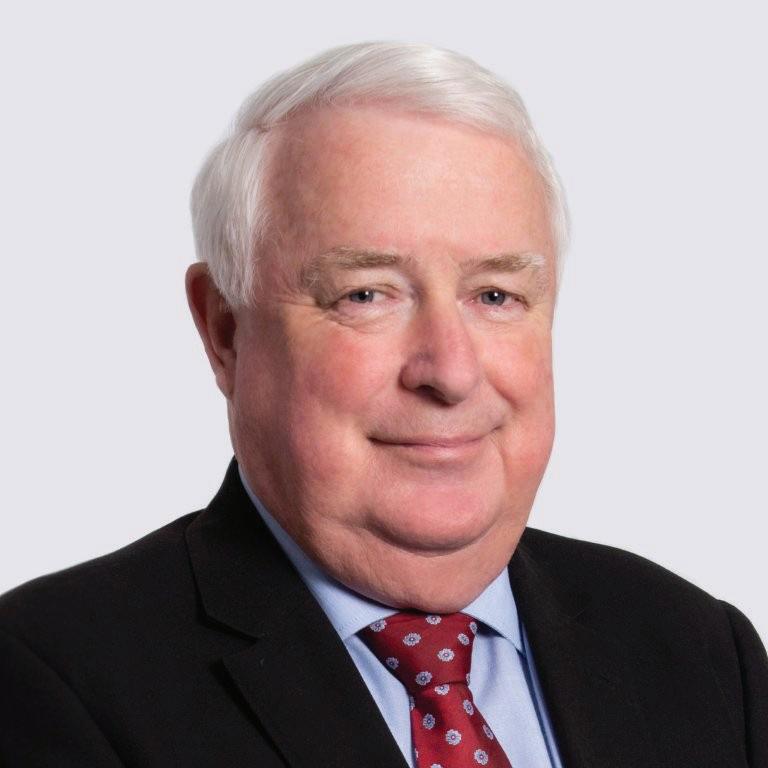
• Compliance with an Approved Code of Practice (ACOP) will become the same as compliance with the Health and Safety At Work Act in many cases.
• The definition of what ‘reasonably practicable’ means in specific industries will become clearer.
• Industry organisations will be allowed to initiate work on ACOPs, with final approval reserved by the Minister.
The EMA has been heavily involved in recent work with ACC to co-design a Harm Reduction Action Plan for Manufacturing, so we know the issues and complexities businesses face in navigating the health and safety landscape.

The simplification of the Health and Safety At Work Act, such as exempting small, low-risk businesses from extensive reporting requirements, will undoubtedly ease the strain. The reduction of ‘tick-box’ exercises, which often detract from addressing genuine safety risks, is a positive development.
Additionally, the clarification of responsibilities between directors and managers is a positive change. By delineating governance from day-to-day operational oversight, the reforms empower managers to better focus on immediate safety concerns, while directors are freed up to concentrate on strategic decisions.
This clarity should reduce confusion and make it easier for businesses to allocate resources effectively.
For industries such as manufacturing, where risks evolve quickly, the introduction of Approved Codes of Practice (ACOPs) offer flexibility, allowing businesses to develop industry-specific guidelines that adapt more rapidly to changing circumstances.
But while these reforms may reduce administrative burden, they do little to tackle the deeper, systemic issues that continue to plague New Zealand’s workplace safety record.
Despite being based on Australian and UK legislation, both of which have much stronger records in reducing workplace injuries and fatalities, New Zealand still suffers from alarmingly high levels of harm.
Our workplace injury and fatality statistics remain among the worst of the developed nations, with twice the rate of Australia and four times that of the UK.
Clearly, something more profound is needed.
The fundamental question remains: will these reforms genuinely reduce harm or are they simply a band-aid solution to a much deeper problem?
The root cause of high workplace injury and fatality rates in New Zealand is the lack of clarity in regulations and the failure to address key areas like enforcement, education, and multi-employer workplace coordination.
Without a modern regulator that is there to help, the reforms run the risk of becoming another set of guidelines that businesses pay lip service to, without
making any real changes on the ground.
It’s not enough to merely simplify compliance, we need to foster a culture of safety that goes beyond paper compliance and drives practical, meaningful change.
For instance, while the introduction of ACOPs tailored to industry subsectors is an innovative approach, it assumes that businesses have the capacity and resources to develop and implement them effectively.
In manufacturing, there are more than 70 subsectors, each requiring either industry or business associations to engage and create these practical guidelines if they are needed.
This argument assumes we have the economies of scale within subsectors to resource these ACOPs.
I’ve been involved in the drafting of ACOPs in the past – they come in and out of fashion – and they were a process of endless meetings and wordsmithing.
Some useful ACOPs came out of this process. There are currently 23 existing ACOPs on areas such as asbestos removal, but there was a real lack of resourcing to successfully build on these and, in many subsectors, they weren’t completed.
In reality, the lack of economies of scale in smaller subsectors means that resources for drafting, updating, and enforcing these codes are often insufficient.
In practice, the absence of a well-resourced and coordinated effort by government agencies such as WorkSafe means that some subsectors will continue to be underrepresented, leaving workers at risk. Moreover, the government’s budget for health and safety enforcement remains a point of concern. The announcement of an additional $2.7 million in funding for new inspectors is a step in the right direction, but it’s worth remembering that the annual cost of workplace harm in New Zealand is estimated at $4.9 billion.
This raises the question: is $2.7 million enough to reverse years of underinvestment in workplace safety?
The situation is made more urgent by the recent
restructuring of WorkSafe, which has seen the reduction of core roles and functions.
Imagine you’re driving down a straight road with your pedal to the metal. If you look in your rearview and there’s a police car, what do you do? Of course, you’ll slow down and drive more carefully.
If you see that police car then pull off the road, you’ll be more inclined to keep travelling as you were. Consider the millions spent on road safety to get the driving public to become confident and competent. The argument is, should we need a police force to monitor our driving? Law only ever prescribes the minimum requirements for a particular issue.
The EMA believes New Zealand needs more detailed health and safety regulations, similar to those of Australia and the UK, and we need a national strategic plan to make workplaces both safer and healthier.
WorkSafe NZ needs to be stabilised and given a clear mandate to work with businesses on making the workplace safer. It needs to be a modern regulator, not one focussed solely on non-compliance and enforcement.
New Zealand has to accept that, as a country, we are not doing workplace health and safety well.
Discussions with the Minister and her team at MBIE indicate that there are more health and safety changes in the pipeline, which is welcome news. We need not reinvent the wheel but rather learn from countries with strong health and safety regulations and implement known and successful interventions.
continued from Page 1
One of the many ways they have done this is through investing in and using artificial intelligence in the production of training videos, which have been used as part of the multi-language training materials accessible through kiosks placed throughout their workshops.
Supporting growth is a priority for us at ASB as we endeavour to sustain our position as being the leading supporter of NZ business, a position we have held for the past 5 years.
We are committed to backing brilliant businesses take on the world. In the first half of the year, we have increased international trade finance lending
by nearly $150m, supporting business with our fully subscribed $30 million clean tech and $20 million food and fibre accelerator funds.
We are continuing to support exporters and innovators with capital and global network opportunities, as well as boosting our internal capability in the critical food and fibre and manufacturing sectors.
With tailored financial products and advisory services, banks can empower NZ businesses to innovate and grow, ultimately driving economic development. Business must own our future as a country, and ASB wants to help make this happen.
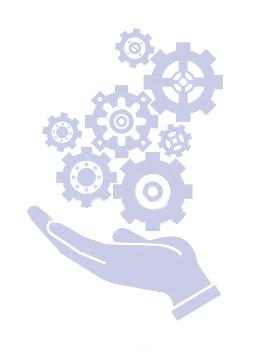
Copy Deadline – 5 May 2025 Advertising – For bookings and further informa
Stralis Aircraft, Fabrum and Ara Ake are collaborating to advance hydrogen-powered aviation by designing, developing and testing liquid-hydrogen storage tanks and a fuel system for Stralis aircraft.
The partnership aims to enable Australasia’s first liquid-hydrogen-powered flight - and support the transition toward zero-emission aviation.
Australian company Stralis Aircraft, which develops high-performance, low-operating-cost hydrogen-electric propulsion systems, will integrate Fabrum’s tanks and fuel system into its aircraft.
New Zealand company Fabrum, which specialises in zero-emission transition technology, will provide lightweight composite tanks and dispensing systems, essential enablers for hydrogen-powered aircraft.
The project is supported by Ara Ake, New Zealand’s future energy centre, and aligns with Fabrum’s recently announced hydrogen testing facility at Christchurch International Airport.
“Our hydrogen liquefier provides readily available liquid hydrogen onsite, allowing the capability to access the critical fuel source to prove and test the tanks and fuel system we are developing for Stralis and their fixed-wing fuel-cell electric aircraft,” said Christopher Boyle, Managing Director of Fabrum.
“With Ara Ake support, we are excited to be delivering our light-weight composite tanks and fuel system for Stralis to advance the future of hydrogen-powered flight.”
The collaboration also aims to strengthen industry ties between New Zealand and Australia. The project will build expertise in
liquid-hydrogen storage refuelling, and aircraft integration, contributing to New Zealand’s growing role in hydrogen aviation.
“This project is a strong example of Ara Ake’s role in connecting leading organisations across countries to advance real-world clean energy solutions,” said Cristiano Marantes, CEO of Ara Ake.
“By enabling this initiative, we’re supporting the first hydrogen-electric demonstration with liquid hydrogen and positioning New Zealand as a global testbed for sustainable aviation innovation.”
Stralis’ fuel-cell technology is significantly lighter than existing alternatives, potentially enabling aircraft to fly ten times further than battery-electric solutions at a lower cost than fossil-fuel-powered planes. The company is already testing its hydrogen-electric propulsion systems with a team that has deep expertise in electric-aircraft development.
“This project is a significant step forward for Stralis as we test and refine our hydrogen-electric propulsion technology and build our liquid hydrogen capability,” said Stuart Johnstone, co-founder and CTO of Stralis Aircraft.

You might have heard the term ‘tech bro’ – a shorthand for the hypermasculine culture synonymous with the startup world. But while it’s often associated with Silicon Valley, that same culture is alive and well in New Zealand’s innovation scene too, say researchers Professor Anne de Bruin and Dr Janine Swail. Entrepreneurial ecosystems: the networks, organisations, and funding systems that support startup ventures, might seem open to all. But they’re far from gender neutral, the researchers say.
“The strong association of masculine traits with entrepreneurship persists, hindering gender equity,” says de Bruin.
In a new paper, de Bruin and Swail examine how gender dynamics shape startup ecosystems, and how feminist theories can be used to make them more inclusive and equitable.
“If you think about Auckland’s startup sector, it’s still pretty ‘tech bro’,” says Swail. “We need to rethink what it means to be inclusive in entrepreneurship.”
She says this starts with challenging the norms that shape entrepreneurial culture – norms that can make women and non-binary people feel unwelcome.
“Imagine you’re a female deep-tech entrepreneur looking for a lab or an accelerator programme,” says Swail. “You walk into a space that feels overwhelmingly masculine; in-jokes, blokey language, a boys club. It can be difficult to feel like you belong, let alone thrive.”
One of the biggest barriers? Unacknowledged gender bias baked into the structures and language of entrepreneurship. De Bruin points to New Zealand’s finance ecosystem, where most venture capitalists are men.
“The way people communicate and operate in that world is often coded in a very masculine way. Language matters, and when we start to unpack it, we see how women and others are often excluded, even unintentionally.”
If New Zealand wants to develop a genuinely diverse startup sector, we need to question who it’s built for, and who’s being left out.
Feminist theories argue for a shift from accepting the status quo to actively creating gender-equitable ecosystems.
One international organisation the researchers point to doing just that is Coralus (originally SheEO). Formerly led in New Zealand by Dame Theresa Gattung, Coralus was launched in Canada in 2015 as an experiment in more equitable funding for women and nonbinary people.
Since then, it has flipped the traditional funding
“We look forward to advancing hydrogen-electric aviation and fostering new partnerships in New Zealand.”
Green hydrogen is produced through electrolysis of water using renewable electricity. With an energy density three times higher than sustainable aviation fuel (SAF), and over 100 times greater than batteries, hydrogen can offer a credible alternative for aviation[1].
The support from Ara Ake has enabled Stralis and Fabrum to accelerate the development of this technology, with the goal of achieving Australasia’s first liquid-hydrogen-powered flight.
This collaboration represents not just a technical milestone, but a pivotal step toward making zero-emission aviation a commercial reality in Australasia and beyond.

model favouring male-led ventures and distributed nearly $19 million to more than 190 femaleand non-binary-led ventures using a collective decision-making model.
“By challenging traditional funding structures, Coralus reimagines what an entrepreneurial ecosystem can look like,” says Swail. “Even the name change – from SheEO to Coralus – reflects a broader, more inclusive vision.”
If New Zealand wants to develop a genuinely diverse startup sector, we need to question who it’s built for, and who’s being left out, says de Bruin. “We can create new pathways and build a future for entrepreneurship that’s more inclusive, more equitable, and ultimately, more innovative.”
The landscape of manufacturing is undergoing a significant transformation as we transition from the principles of Industry 4.0 to the emerging focus of Industry 5.0.
While Industry 4.0 emphasised automation and the integration of digital technologies into manufacturing processes, Industry 5.0 shifts the spotlight towards augmentation, fostering a harmonious collaboration between humans and machines.
Industry 4.0 brought a revolution by embedding automation and data exchange into manufacturing through cyber-physical systems, the Internet of Things, and cloud computing. The central aim was to streamline operations, reduce human intervention, and enhance efficiency.
However, as we pivot to Industry 5.0, the emphasis broadens to include the critical role humans play alongside machines, leveraging the unique capabilities of both to drive innovation and adaptability.
The shift from automation to augmentation marks a fundamental change. Automation focuses on machines performing tasks independently, effectively reducing human involvement in repetitive and labour-intensive activities.
In contrast, augmentation enhances human capabilities. It is about empowering workers with intelligent systems, using machines to support and elevate human decision-making and creativity rather than replace it.
The synergy between humans and machines in Industry 5.0 offers numerous benefits. It enhances problem-solving capabilities by combining human intuition with machine precision and data processing power.
This partnership can lead to more innovative solutions and a more flexible production environment. Moreover, it increases operational efficiency as machines handle repetitive tasks, allowing human workers to focus on more strategic roles that require creativity and complex decision-making.
Real-world examples of successful augmentation in manufacturing often involve collaborative robots, known as cobots, working alongside human workers on production lines.
These cobots are designed to assist with precision tasks, reducing the physical strain on workers and lowering the risk of human error.
In some factories, augmented reality tools are used to provide workers with real-time data overlays, enhancing their ability to assemble complex products accurately and efficiently.
Recent innovations led by major players within the AI industry is enabling the deployment of short run, cost effective robot solutions.
Nvidia the leader in AI compute technology with their market leading Cosmos world model is enabling robots at small scale with the creation of synthetic data for training.
Humans are a critical component in this process as the technology evolves.
The rise of Industry 5.0 heralds significant implications for the workforce. While there is concern about machines replacing jobs, the focus on augmentation offers a more optimistic outlook.
It suggests a shift in job roles rather than outright displacement, with new opportunities emerging in managing and optimising machine-human interfaces.
This transformation can lead to an upskilled workforce, where employees are empowered to engage in higher-level tasks, fostering job satisfaction and productivity.
For productivity, the combination of human creativity and machine efficiency promises a more resilient and adaptive manufacturing environment.
This integrative approach can lead to faster innovation cycles and a more responsive supply chain, ultimately benefiting businesses and consumers alike.
In conclusion, Argon & Co.’s expertise, particularly through its IRIS practice, positions it uniquely to guide organisations through this transformative phase.
By understanding and addressing the challenges involved in the transition to Industry 5.0, businesses can fully realise the potential of human-machine collaboration, ensuring a competitive edge in the ever-evolving manufacturing sector.
If you’re ready to embrace the future of manufacturing, contact us today to explore how we can help you navigate the transition to Industry 5.0 and unlock the full potential of human-machine collaboration.

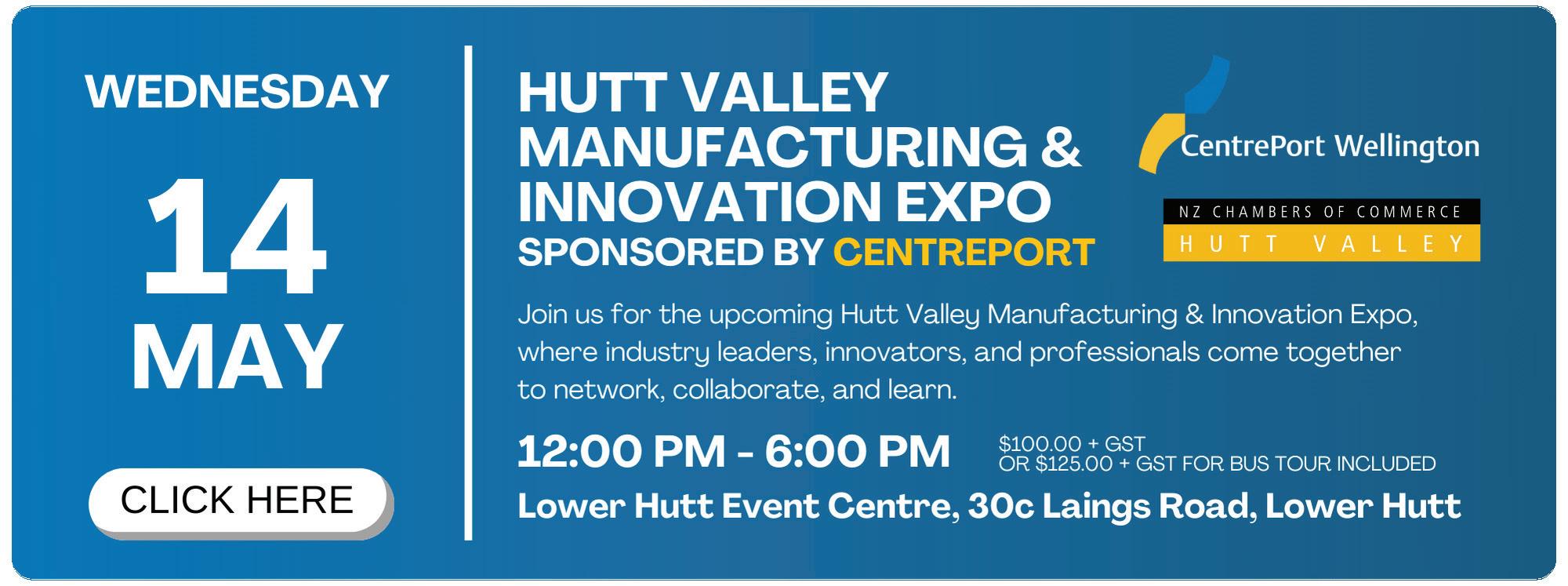
The remanufacturing market unlocks opportunity across sectors for higher margins, affordability, and supply chain resilience.
Remanufacturing, the process of restoring used parts to give them a second life, has propelled into the spotlight in recent years by attempts to mitigate supply chain shortages, reach new customers through affordability, and search for high-margin alternatives for parts.
Both independent remanufacturing companies and remanufacturing arms within OEMs have proved essential for efficiently restoring parts and creating a way to lower expenses while making operations more efficient.
These players provide value across multiple industries, from the well-established space in the automotive sector to more emergent opportunities across sectors such as medical devices and electronics.
All of these sectors can benefit from reduced dependence on raw materials, extended product life cycles, and more.
But remanufacturing is an inherently complex process, and the industry faces unique challenges.
For example, remanufacturers grapple with the unpredictable availability, quantity, and quality of incoming used parts (referred to as “core”), complex pricing due to the volume and long tail of SKUs, and a high volume of unstructured, text-based data generated by product warranty claims.
Remanufacturing is the process of restoring core to give it an entirely new life.
The core, the starting point for the remanufacturing process, is typically a high-value part that requires technical expertise to be restored to its original function.
Within the automotive and industrials industry, parts that can be remanufactured include engines, transmissions, hydraulic components (such as bucket lifters), and drivetrain components (such as clutches and axels), as well as turbochargers and superchargers.
Historically, the automotive and industrial equipment industries have had the most use cases for remanufacturing, but a growing number of use cases are emerging in industries such as medical devices, furniture, electronics, and aircraft components.
The remanufacturing process typically involves seven primary steps (exhibit).
Prior to the remanufacturing process, raw materials travel through the product process, which begins
with the extraction of raw materials, followed by product manufacturing, and product use.
The product can then travel onto one of the three final phases: the end of its life cycle in a landfill, recycling, refurbishment or repair, or the remanufacturing process.
The remanufacturing process is comprised of seven steps: disassembly, cleaning, inspection and sorting, reconditioning, replacement, reassembly, and testing.
Once the product is remanufactured, it enters back into produce use and cycles through the three final phases.
1. Disassembly. A worn part is completely disassembled into its subcomponents.
2. Cleaning. Sandblasting, hot water treatments, ultrasonic cleaning, and other methods are used to thoroughly clean each component.
3. Inspection and sorting. All parts are inspected to determine which are reusable and sorted.
4. Reconditioning. Reusable parts are reconditioned through processes such as grinding or galvanizing.
5. Replacement. If a component does not meet quality standards, it is replaced with a new part.
6. Reassembly. The part is reassembled to meet or exceed the original specifications for function.
7. Testing. The part is rigorously tested for performance so that it meets or exceeds the original quality standards.
Remanufacturing offers several benefits for OEMs and remanufacturing organizations, including the following:
Cost-effectiveness. Remanufacturing can reduce

costs by 40 to 60 percent, directly boosting margins versus newly manufactured parts.
Faster availability. From 2020 to 2023, 33 percent of players across industries had “very significant” supply chain disruptions due to material shortages, according to McKinsey analysis, though disruptions have begun to improve. Remanufacturing makes parts available more quickly by using less raw material than new product manufacturing.
Reaching new customers through affordability. By extending product life cycles, product prices can be 45 to 65 percent lower,2 giving remanufacturers the opportunity to grow organically and, in many cases, reach a new set of customers.
Remanufacturers face a unique set of challenges, including the following:
Complex product pricing. Remanufacturing players manage substantial volumes of SKUs (sometimes over a million), which complicates SKU pricing. In addition, remanufacturers often manage a long tail of SKUs with low volumes, making it difficult to measure elasticity and arrive at an appropriate price.
Furthermore, each product may have a wide variety of different product vintages, status codes, and life cycles. Remanufacturers also need to balance the dynamics of different tiers of product (for example, OEM-grade, tier-two, and remanufactured parts).
Variable core availability and difficulty in core forecasting. Several factors make it difficult to predict when players will receive core, including the varying lifespans of different parts and macroeconomic conditions that may cause companies to keep their old equipment running longer.
Because remanufacturers cannot always predict the arrival and condition of the core, they sometimes incur excess operating costs, such as overtime shifts or expedited shipping for urgent orders.
Warranty management. Warranty claims often include high volumes of unstructured text data for every product in the portfolio, causing OEMs to struggle with identifying patterns of information, making improvements to their products, or reducing warranty costs.
Without a way to synthesise this valuable information, companies often let it go to waste.
Remanufacturing undoubtedly makes logistics, pricing, and operations more complex. But companies that pursue it reap the benefits of lower costs and prices, new customers, and supply chain resilience.


- Doug Green, Publisher
Fisher and Paykel Healthcare, Gallagher Industries, Buckley Systems, Rocket Lab, Rakon, Skellerup Holdings, Particle Systems, Scott Technology…are just a few examples of successful companies who have found markets for their ‘home grown’ products and services. And they keep moving ahead in challenging times.
They are members of the Creative Class – to which so many of us belong – who help drive the economy. They are the people who role their sleeves up and get stuck in, in their workshops or studios, to make ‘the next best thing’ and find new markets for their unique products.
At present, it is not only tariffs we need to keep an eye on, Generative AI (GenAI) is set to reshape manufacturing, driving innovative integration, operational efficiency, and data insights, transforming productivity and revenue.
Distribution leaders will need to adopt AI, robotics, and IoT to enhance industry-specific processes, data, and ways of working.
Ian Walsh, Partner, Argon and Co is big on Lean. And others don’t just talk Industry 4.0, they also talk Industry 5.0
These are all required for the efficiency of manufacturing. And of course, there is the urgent need to raise the levels of Productivity. This cant just be a never-ending conversation piece – we need to
do something about it!
Manufacturers will have to be prepared for the continued rise in competition from lower-cost production countries in Asia, including Vietnam, Thailand and China, along with more technologically advanced nations in Europe.
The world and its markets are changing and our manufacturers need to adapt and move forward.
Research the TIN Network, or the EMA, HERA, the Hutt Valley Chamber of Commerce, the Southland


Business Chamber, Make NZ or the Northland Chamber of Commerce. Join, find out what is going on and work with aspirational companies like your own for better business.
Trade shows, such as SouthMACH 2025, are an opportunity to become better informed of products and services available to make New Zealand manufacturing better. To make your company more efficient and successful.
SouthMACH 2025 puts you in the same room as the Creative Class; innovative businesses who are following their dream to achieve on local and world markets. And even though at present we are all facing the challenge of tariffs imposed by an inept regime, we need to plan ahead and continue to focus on where the opportunities are.
In April and May issues of NZ Manufacturer magazine we profile SouthMACH 2025. Because manufacturing and technology trade fairs such as this one, are few and far between. Best wishes for a rewarding experience.




Get ready to see tne latest in Robotics, Automation, IOT, Electronics, Education & Training, Materials, Composrtes, Industrial Macninery, Manufacturing Tools, HVAC, 30 Printing and more from leading New Zealand and International suppliers!






Caliber Design is turning 10—and we’re marking the occasion at SouthMach 2025 with a celebration that reflects who we are: practical, people-focused, and project-driven.
Visit us at Booth 135 for a slice of birthday cake and go in the draw to win a $1,000 Christchurch Adventure Park voucher. While you’re there, we’d love to talk about how we can help you scale your mechanical engineering capacity, flexibly and efficiently.
We’re not a consultancy. We’re not a contractor. Caliber is something different—a secondment-based engineering firm with a growing team of over 60 mechanical engineers working with businesses across New Zealand. We embed engineers directly into your team, on-site or remote, to provide the horsepower you need to get projects across the line.
Whether you’re navigating a peak workload, filling a short-term skills gap, or moving a major capital project forward, our engineers are there when and where you need them. From machine design and product development to FEA and project engineering, our team has deep, practical experience across a wide range of industries—from automation and manufacturing to food processing, aerospace, and advanced materials handling.
What sets Caliber apart isn’t just our model—it’s our people. We carefully select engineers who bring the
right mix of technical ability, communication skills, adaptability, and professionalism. We back them with systems, mentors, and processes that ensure they deliver value quickly. And we stay involved— checking in regularly, monitoring progress, and making sure the secondment is working for everyone.
When you engage a Caliber engineer, you don’t just get that one person—you tap into the entire Caliber network. That’s 350+ years of collective experience, shared knowledge, and access to a powerful library of proven templates and systems.
As one client put it, “Caliber engineers don’t just fill a role—they take ownership, solve problems, and bring fresh thinking to the table.”
Over the past 10 years, we’ve helped some of New Zealand’s most innovative businesses move their ideas from concept to reality.
From supporting HamiltonJet in developing state-of-the-art marine propulsion systems, to helping Fabrum advance hydrogen technology … and working with Wyma on world-leading post-harvest agricultural equipment and Daifuku on complex airport luggage handling systems, our engineers are helping scale production, bridge resourcing gaps, and build better, faster, and smarter.
We’ve also played a quiet but critical role in keeping the industry connected. Our model means we’re
*The BusinessNZ Performance of Manufacturing Index (PMI) decreased to 53.2 in March 2025, down from 53.9 in February.
*Production reached 54.2, its highest since December 2021
*Employment rose to 54.7, the strongest since July 2021
*New orders in contraction at 49.6, reflecting continued demand challenges.
Finished stocks surged to 56.3, suggesting manufacturers are building inventory.

uniquely positioned to see what’s happening across the country—in big OEMs, niche R&D firms, and busy production facilities.
We share that insight. We connect people. And increasingly, we’re being asked to help clients not just fill roles, but solve broader engineering and delivery challenges.
We’re proud of what we’ve built—and excited about what’s next. We’ll continue to grow our mechanical engineering capability, and we’re actively exploring how we can support clients in related disciplines.
We’re also investing heavily in learning and development, ensuring that every Caliber engineer gains exposure to world-class projects, expands their skillset, and contributes meaningfully to the New Zealand industry. It’s good for them. It’s good for you. And it’s good for engineering in Aotearoa.
Let’s talk at SouthMach
If you’ve worked with us before, come say hi and have some cake. If you haven’t yet, stop by and find out why over 240 New Zealand companies have trusted us with their engineering resource needs.
�� Booth 135
Birth day cake + prize draw
Win a $1,000 Ch ristch urch Adve n ture Park vouch e r
Here’s to the next 10 years.

Convex, an innovative New Zealand plastic packaging company, sees staff training not just as a strategy, but as a vital driver of success. During the Covid-19 pandemic, the company actively invested in upskilling its people to stay agile through the crisis.
Now, with New Zealand businesses facing fresh economic challenges, Convex continues to lead by example — showing how ongoing training builds a stronger, more resilient workforce.
Convex Operations Manager Aaron Collett says agility and adaptability have been the key to thriving in an industry as competitive as plastics packaging.
“Upskilling is a necessity to being and staying competitive, and for us competition is not just local, it’s global,” says Aaron. “Manufacturing is under pressure in New Zealand from imports and staying competitive in the packaging business is tough. A lot of what we do is highly specialised, capital intensive, and relies heavily on skilled trained staff.”
He says while training is a non-negotiable at Convex, it must also be scalable through tough times.
“Investment in training changes depending on the need, but for us it has always been important to continue upskilling our people, it’s just ‘the where’ and ‘the how’ that changes,” says Aaron.
“As a business we certainly have been tested, firstly during Covid and more so recently with the economic
downturn. In recent years we’ve had to navigate a new landscape in reduced demand so all areas of the business have been reviewed and training has been reduced in some non-core areas to reduce costs – but apprenticeships and appliance training maintains status quo and we’ve boosted training around HR, mental health and resilience as well as group training utilising the expertise of key suppliers.”
One clear benefit of this sustained investment is agility. Trained employees can maximise production efficiency, adapt to new technologies, and take on different roles as needed. Around 15% of Convex’s 105 employees are actively engaged in training, many through Competenz, working towards qualifications in printing, engineering, and manufacturing apprenticeships, as well as health and safety programmes.
“A sound level of training gives staff the ability to maximise the setup and speeds which machines can be run at, and cross-training in certain areas gives us flexibility to move staff around as the work changes,” says Aaron.
The majority of Convex’s workforce has completed foundational manufacturing training. This not only enhances individual skills but also strengthens the company’s ability to retain staff and build long-term careers.
“Over the years we’ve put over 70 percent of our staff
through basic manufacturing levels with Competenz as it gives them scope, confidence and the ability to learn new skills whether they use it at work or for personal growth.
‘Frontline management courses for staff becoming supervisors has definitely paid dividends, giving staff structure and confidence to supervise effectively, and there has never been a time when we haven’t had a printing apprentice,” Aaron adds.
“Like any manufacturing business, you can’t be doing what you did yesterday. Having the continuous improvement notion and attitude ingrained in a business is gold and that’s hard to do. You train to future proof.
“Any training you give staff where they are empowered to participate and contribute will benefit both the business and the individual staff member. We have been through testing times but training has helped us be more agile and reactive as the industry landscape has changed.”
Training requires commitment, resources, and a willingness from employees to embrace new challenges. In a period where many businesses are cutting costs to navigate financial pressures, Convex’s ongoing commitment to upskilling staff stands out as a forward-thinking approach to economic resilience.
continued on Page 27


Adam Sharman, CEO LMAC Group APAC
As trade tensions escalate globally, through the introduction of heavy tariff from the U.S. New Zealand manufacturers find themselves navigating increasingly complex waters.
The United States is one of New Zealand’s key export markets worth approximately NZ$9 billion annually, and New Zealand products provide key components in other countries’ supply chains into the USA.
The ripple effects of U.S. tariff changes extend far beyond simple price adjustments. When tariffs increase, manufacturers face immediate margin pressure, but also longer-term strategic questions about market positioning and investment priorities.
For New Zealand’s primary sector, dairy processors, which have developed specialised ingredients for U.S. food manufacturers, tariff increases could undermine carefully cultivated market positions. Similarly, premium meat exporters who have invested heavily in sustainability certifications and farm-to-table traceability to command premium pricing, could see their value propositions challenged. The impact extends beyond agricultural processing. New Zealand’s high-tech manufacturing sector, including medical device manufacturers and precision agricultural equipment producers, faces similar challenges.
For organisations that have established niches in specialised global supply chains where even modest tariff increases could significantly alter competitive dynamics, a focus on IP protection and maintaining certifications required for market access, for example in aerospace, pharmaceuticals and defence help protect market position, and reduce price sensitivity.
While tariff increases present challenges, they also create strategic opportunities. As tensions escalate between the United States and other major trading blocs, particularly Europe and China, New Zealand manufacturers could benefit from “tariff arbitrage” – situations where Kiwi products become relatively more competitive due to higher tariffs on competitor nations.
Exporting organisations are required to think differently about their global market positioning, both in terms of direct market tariffs and the relative position with respect to global trade dynamics.
Whilst this is not a new concept, the volatility introduced through the USA’s latest tariffs require organisations to develop both risk and opportunity response plans that maintain market position and capitalise on market opportunities create by trade tensions between other, competing regions.
For example, with higher tariffs on European meat products into the U.S. market, New Zealand dairy producers should be ready to step in with expanded production and distribution capabilities as New Zealand products become relatively cheaper by comparison.
This requires maintaining production flexibility and strong relationships with American distributors who may suddenly seek alternative suppliers.
Even given the potential opportunities created by shifting trade dynamics, margin erosion is a likely consequence for exporting New Zealand manufacturers as price pressure for their produces in market increase and cost of materials increase.
With geographic isolation already imposing a “distance tax” on exports, companies must double-down on operational efficiency to maintain margins even when facing tariff headwinds.
Successful manufacturers are those taking a holistic approach to efficiency. Organisations that focus on all aspects of their operation from material use and product design to production and logistics to optimise productivity when cash flow is constrained, and big plays are out of reach will be those that are running whilst others are crawling as the markets settle.
This means, optimisation of production efficiency to maximise capacity and reduce cost to manufacture, optimisation of supply chain efficiency to reduce material cost and stock held, and optimising process quality to minimise waste and rework. Whilst these focuses should be a continual focus, it is easy to let them slip when demand is high. However,
an unrelenting focus on operational efficiency is a critical foundation for agility and resilience in an uncertain world.

U.S. tariff policies represent just one aspect of what business strategists increasingly describe as a VUCA (Volatile, Uncertain, Complex, Ambiguous) or BANI (Brittle, Anxious, Non-linear, Incomprehensible) operating environment.
For New Zealand manufacturers, success increasingly depends on developing organisational capabilities, flexibility and efficiency that foster resilience regardless of specific trade policy outcomes.
The manufacturers who will thrive are those building adaptive, resilient organisations who can move quickly to respond to price fluctuations and changing market access requirements.
This means cultivating scenario planning capabilities, maintaining robust market intelligence functions, and developing diverse sourcing strategies. It also requires closer collaboration throughout supply chains to ensure rapid response to market shifts. Fundamentally, it means being as efficient as possible in production to maintain margin in good times and bad, to ensure capacity and resource levels that allow for a rapid response.
As Kiwi manufacturers navigate this complex landscape, the most successful will maintain their traditional strengths – quality production, innovation, and supply reliability – while rapidly developing new capabilities focused on agility and adaptation.
Those who view tariff challenges as opportunities to build more resilient organisations may ultimately emerge stronger, regardless of how specific trade policies unfold.
Leading New Zealand e-waste company, Echo, achieved the‘Climate Positive Business Operations’ certificate with Ekos, providers of national environmental auditing services.
This certification signifies Echo goes beyond neutralising its carbon footprint, actively removing more carbon from the atmosphere than they generate.
In achieving this certification, Echo carried out Greenhouse Gas (GHG) emissions reporting in partnership with Ekos, in which they:
• Identified and classified the different sources of emissions (Scope 1, Scope 2, Scope 3)
• Measured and calculated these emissions through in-depth data capture
• Reported on emissions following the GHG protocol
• Ensured these emissions have been verified and undergone external auditing
• Offset any emissions generated by business operations with verified carbon credits
• Are implementing a reduction plan to decrease their CO2 emissions.
Echo’s CEO Patrick Moynahan says: “Our carbon positive certification highlights Echo’s market-leading dedication to going beyond, driving
meaningful environmental change.
The certification takes our ongoing commitment to the environment even further, ensuring our operations not only reduce environmental impact, but also actively contribute to a greener future for all in Aotearoa New Zealand.”
With approximately 120,000,000 kgs of e-waste generated every year in Aotearoa, with only 2% of this diverted from landfill and recycled properly, Echo’s carbon-positive commitment indicates a doubling down on this mounting issue.
Sustainability isn’t just about ticking boxes for your next report. It’s about seeing the big picture - how the world is affecting your business and how your business is affecting the world. That’s the idea behind double materiality, and it’s something manufacturers across New Zealand should start paying attention to.
This approach goes beyond compliance. It can help you build a more resilient business, unlock opportunities and manage risks - whether you’re exporting food and beverages, building homes or making parts for machinery.
Double materiality means looking at sustainability from two perspectives:
Impact materiality: how your activities affect the environment, society and economy.
Financial materiality: how environmental and social issues affect your financial performance, risks and long-term success.
This approach is already required in some parts of the world. For example, the European Union’s Corporate Sustainability Reporting Directive (CSRD) mandates it. Even if you don’t export to the EU, it’s likely your customers or investors will start asking for the same level of transparency.
Why does this matter in New Zealand?
Even though New Zealand’s reporting regulations currently focus more on financial materiality, there’s growing interest in taking a broader approach. Why? Because it makes business sense.
Le t’s look at a fe w e xample s:
1. Food an d be ve rage man ufacturin g
Impact materiality: The way you source ingredients matters. Are you contributing to deforestation, water stress or unethical labour practices?
Financial materiality: If global retailers tighten their supply chain standards (as many already have), you could lose access to key markets unless you can prove your practices are sustainable.
What you can do: Use certified ingredients, invest in traceability, or switch to regenerative farming partners. These changes reduce your impact and protect your bottom line.
2. Te xtile s an d con sume r goods
Impact materiality: The fast fashion model creates waste and pollution, with many textiles ending up in landfill.
Financial materiality: Growing consumer demand for sustainable products is shifting the market. Products that aren’t seen as responsible may struggle to sell or fetch lower prices.
What you can do: Offer circular solutions - repair, reuse or recycling options. Use organic or recycled fibres and communicate these benefits clearly to customers.
3. Plastics an d packagin g
Impact materiality: Non-recyclable or single-use
plastics contribute to environmental harm.
Financial materiality: New Zealand’s product stewardship schemes and bans on certain plastics are already affecting what’s allowed on shelves.
What you can do: Redesign your packaging to be reusable, compostable, or easier to recycle. It can improve your brand image and reduce regulatory risk.
4. Wood proce ssin g an d furn iture man ufacturin g
Impact materiality: If you’re sourcing timber from unsustainable forests or using toxic adhesives and finishes, your products could contribute to deforestation and indoor air pollution.
Financial materiality: Customers (especially in export markets) increasingly want certified sustainable products. Failing to meet these standards can result in lost contracts or reduced sales.
What you can do: Shift to FSC-certified or locally sourced timber, reduce the use of harmful chemicals, and promote your sustainability credentials to gain a competitive edge.
5. Dairy proce ssin g an d e xport
Impact materiality: Emissions from dairy farms and wastewater from processing plants can contribute to climate change and water pollution.
Financial materiality: International buyers are tightening their sustainability criteria. Supermarkets and distributors may drop suppliers who can’t meet new climate and water standards.
What you can do: Work with suppliers to improve environmental performance, invest in cleaner technologies, and monitor your footprint to meet export requirements and avoid reputational risk.
Double materiality isn’t just about reporting
While many frameworks use materiality to guide sustainability reporting (like GRI or CSRD), the real value for manufacturers comes from using it to inform business strategy.
Set meaningful sustainability goals
Prioritise where to invest time and resources
Build stronger relationships with suppliers and stakeholders
Understand what’s coming down the track—before it’s urgent
Show leadership in your industry
Think of it as a radar system. It shows where your business might be exposed (e.g. through emissions, water use, or social risks in the supply chain) and where there’s opportunity to innovate or lead.
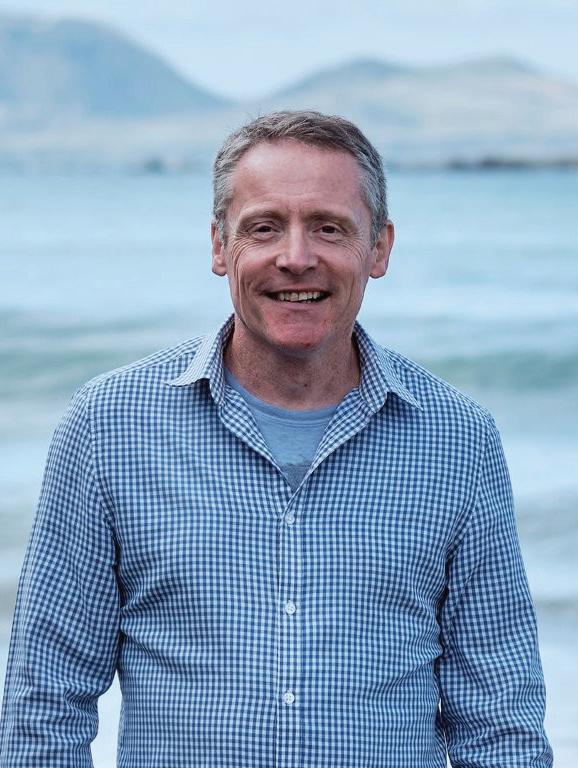
Many companies still treat materiality as a one-off exercise. But the world doesn’t stand still, and neither should your approach.
To get the most value, make your double materiality process dynamic. That means:
Reviewing it regularly (e.g. annually, or when major changes happen)
Engaging internal teams and external stakeholders
Using future scenarios (e.g. climate impacts, changing regulations, supply disruptions)
Embedding it into decision-making at all levels
Don ’t ove rcomplicate it. Start with the areas you know have the biggest impact or risk.
Talk to y our stake h olde rs. Ask staff, suppliers, customers and community groups what matters most.
Use wh at’s alre ady out th e re Frameworks like GRI can help guide your approach, even if you’re not reporting formally.
Work with e xpe rts. A good materiality assessment can help you see the links between sustainability and business performance more clearly.
Whether you’re early on your sustainability journey or looking to sharpen your strategy, a dynamic double materiality approach will help you stay ahead of the curve.
Re ad our Ne e d to kn ow: Double materiality guide or get in touch with thinkstep-anz’s expert Martin Fryer to talk through what this could look like for your business.
www.thinkstep-anz.com
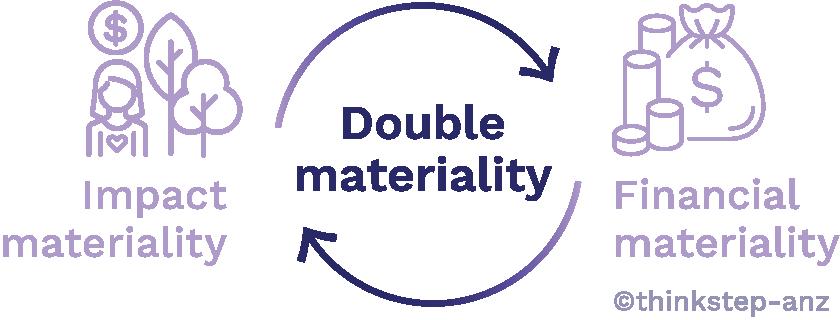
Adam Harvey, Business Performance Partner - Manufacturing
In a world of automation and change, the businesses that win aren’t just upgrading technology. They’re upgrading their people.
Successful manufacturing leaders know learning is a driver of performance. They recognise that a workforce that is curious, open to growth, adaptable, and change-resilient is far likelier to learn new systems, adapt to new equipment, and embrace change as part of their everyday work.
The manufacturers who win make learning an integral part of their strategy. A learning culture means fewer errors, higher productivity, and faster adoption of new ways of working.
Hone (not his real name) is in his early 30s. A year ago, he moved 500km for a fresh start and found work at a local freezing works.
He was hardworking and reliable but painfully shy. When asked to move into a new role for more pay, he declined. Not because he couldn’t do it, but because he didn’t believe he could.
Six months later, after joining one of our workplace learning programs, Hone stood up in front of his peers and presented with confidence.
Just before Christmas, he accepted that role. He now speaks up in meetings, shares ideas with his supervisor, and keeps the team on track.
This isn’t just about Hone’s personal success. Hone’s
story is one of many over the last 20 years. It’s about how investing in people transforms business performance.
When employees have the confidence and capability to step up, the entire business reaps the benefits— higher productivity, improved morale, and smoother operations.
Think about the last time you introduced a new process or piece of technology. How much time did you lose because people hesitated, resisted, or struggled to pick it up?
When manufacturing workers don’t believe they can learn, they stick to what they know. This hesitation limits both their potential and the business’s ability to evolve.
Take another worker I met. She had the chance to train on a new robot in her plant, but she turned it down. Not because she wasn’t capable—but because she didn’t believe she could.
This self-doubt is a silent barrier to progress. I see it repeatedly: workers hesitant to upskill not because of a lack of ability, but because they don’t believe they’re “the type” of person who can learn something new.
Four months after joining our “Owning My Future” program, that same worker approached her manager: “Can I still get trained on that robot?” That shift changed everything—not just for her, but for the business.
When workers believe they can learn, they embrace change, adapt faster, and bring more to the job. And
when they do that, the entire business improves.

I know what some of you are thinking—we don’t have time for this. And I get it. Productivity is King. But can you afford not to?
If your workforce isn’t confident in adapting to change, how much efficiency are you leaving on the table? How much longer does it take to roll out new technology?
Or are you not bothering to transform because you know your people aren’t ready digitally? It’ll cost you somewhere, I guarantee.
Smart manufacturers don’t treat learning as a disruption. They integrate it through short, focused sessions, on-the-job coaching, and training that directly connects to business goals.
The right learning programme doesn’t take people away from work. It makes their work better.
If your business is serious about performance, the question isn’t whether you have time for learning. It’s how you make learning work for you.
Start small. Run a pilot. Build it into existing meetings. But whatever you do, don’t leave your people behind. Because when they grow, your business does too.
www.thelearningwave.com



Custom manufactured composite clad metal wire provides optimum electronics design flexibility by combining multiple properties into a single wire.
Anomet Composite Clad Metal Wire and Strip feature gold, silver, palladium, platinum, and nickel alloys are metallurgically bonded to cores made of copper, nitinol, platinum, stainless, or tantalum to combine multiple properties such as corrosion
resistance and high conductivity.
Providing optimum design flexibility, they can be fabricated as wire in sizes from 0.05 mm to 3.2 mm O.D. and as ribbon up to 1.0 mm W.
Functionally equivalent to solid wire, Anomet Composite Clad Metal Wire and Strip typically incorporate 2% or more cladding thickness, are uniformly dense, pin-hole free, and will not crack or flake.
Providing greater ductility and formability than electroplated products, they have a smooth, consistent surface finish and comply fully with RoHS and REACH requirements.
Anomet Composite Clad Metal Wire and Strip are priced typically 10 times less expensive than solid precious metal products.
Alfa Laval is expanding its hygienic valve portfolio by introducing the Unique SSV Pressure Relief Valve and the Leakage Detection Butterfly Valve, alongside new smaller sizes of the Unique Mixproof CIP and Unique Mixproof Process valves. By broadening its range, Alfa Laval reaffirms its commitment to providing reliable, high-performing solutions that ensure safe processing, protect product integrity, and safeguard consumers while addressing the evolving needs of the hygienic industries.
Pre ve n t ove rpre ssure
When peak performance under pressure is critical, the Unique SSV Pressure Relief Valve protects hygienic processing lines, particularly those with positive displacement pumps, from overpressure. Paired with and powered by Alfa Laval ThinkTop technology for valve monitoring and control, it safeguards process efficiency, productivity and safety.
Pressure relief setpoints are easy to adjust onsite to accommodate changing conditions. Built on the proven SSV platform, this modular valve shares spare parts with other Unique SSV valves, simplifying maintenance and reducing service costs. Fully CIP-able regardless of the pressure setting, the valve ensures reliable hygiene and performance while minimizing downtime.
En h an ce safe ty
Product safety and efficiency are the hallmarks of this straightforward Leakage Detection Butterfly Valve. When powered by an Alfa Laval ThinkTop for valve monitoring and control, it enhances reliability due to real-time valve monitoring and control. Integrated leakage detection enables rapid response to potential issues, maintaining performance. A single seal, disc and actuator make the valve compact and lightweight while reducing installation, operating, and maintenance costs. Fully CIP-able, the valve guarantees more uptime, continuous operations, long-lasting performance, and energy, water and cleaning media savings.
A wide r ran ge of mixproof valve size s

Alfa Laval is also extending its Unique Mixproof range with two new sizes — 1” (DN25) and 1½” (DN40) — of the Unique Mixproof CIP and Mixproof Process valves. These smaller double-seat mixproof valves offer high cleanability, pressure resistance, and adaptability to meet diverse hygienic processing needs. With these new sizes, manufacturers can easily integrate more compact CIP skids, valve matrices and dosing lines into hygienic processing lines while maintaining the safety that mixproof valves deliver.

FLIR, a Teledyne Technologies company, has introduced the Si1-LD, an industrial acoustic imaging camera that brings faster and more accurate compressed air leak detection to those operating on a modest condition monitoring budget.
The new FLIR Si1-LD offers improved detection and quantification capabilities in comparison with the existing FLIR Si124-LD Plus, along with a higher upper limit frequency range.
Compressed air systems typically lose 25–30% of their air to leaks, resulting in proportionally higher energy bills, costly unplanned production stoppages, shorter compressor operating life, the need to purchase extra compressor capacity, and increased maintenance expenses for the additional equipment.
Leveraging the advantages of ultrasonic technology, the new FLIR Si1-LD pinpoints leaks with enhanced imaging sensitivity at an affordable price. It offers a number of stand-out capabilities and features:
• An array of 96 microphones (2–100 kHz) facilitates the automatic detection, location, and measurement of compressed air and vacuum leaks from a safe distance of up to 130 m. Support comes from a 12 MP colour camera with 8× digital zoom and LED lamp, facilitating the easy capture of visual details.
• Bandpass filtering allows inspectors to effectively tune out any confusing and/or incorrect sources of ultrasound without manual tuning. Ideal for challenging leak detection applications where user input is advantageous, the inspector simply uses the bandpass filter to undertake manual tuning of the required frequency range and clearly displays the source of interest on very rare occasions when needed.
• Single-handed operation of the lightweight, compact FLIR Si1-LD ultrasonic imager and industry-leading AI makes for an easy-to-use device with minimal training perfect for fast-paced inspections across large facilities.
• The touch-screen interface displays high-resolution images for easy issue identification with real-time, on-device quantification in terms of leak
volume flow rate and leak cost per year. Users can leverage this data to prioritise repairs. The data is also suitable for inclusion in sustainability reports as an indication of energy reduction initiatives.
• Wireless data transfer ensures seamless reporting/analytics options, using either the online FLIR Acoustic Viewer or offline FLIR Thermal Studio effortless data backup and organizational team sharing, while also providing the backbone for Over The Air (OTA) firmware updates.

The software gives users the ability to create reports through pre-built or fully customisable templates.
The new acoustic imaging camera comes with two batteries, additional battery cover, battery charger, camera neck strap, hard case, USB memory stick, access to free versions of online and offline acoustic analysis and reporting software, and two-year warranty.
A new accessory is the data transfer cable which allows users to connect directly from the camera to a PC/laptop, supporting easy file access at organisations that forbid the use of WiFi and USB drives.
Two versions of the Si1-LD are available, with and without WiFi. All other features are the same.
:https://www.flir.asia/Si1-LD/

Schaeffler’s split plummer block housing SES for aggressive environmental conditions features clear markings in the upper housing section to show condition monitoring and lubricant supply connection points, to ensure Industry 4.0 compliance.
A new generation of split plummer block housings engineered for the most difficult operating conditions of Australia’s and New Zealand’s toughest industrial applications is being introduced by global bearings and motion control manufacturer, Schaeffler.
The SES series of robust plummer block housings are made of high-quality flake graphite cast iron to house rolling bearings of various diameters and width series, accommodating shafts from 20 - 160 mm (or 3/4 to 5 1/2 inches).
For particularly demanding applications, SES housings can also be supplied in spheroidal graphite cast iron, says Schaeffler Australia.
SES Plummer Block Housings offers a comprehensive approach industrial maintenance needs with a focus on making motion more efficient, intelligent, and sustainable in industries including mining and energy, quarrying and cement,
manufacturing (inc food and beverage processing), materials handling, pulp, paper, sugar, and primary production.
The SES series is also equipped for the most difficult operating conditions encountered within applications such as conveyor belts and systems; crushers and mills; paper and cement handling; drive drums; fans and turbines; and general heavy industry.


The new tools and accessories –including the OPTIME condition monitoring system and the C1 automatic lubrication technologies, right – are supported with in-house technical backup in Australia and New Zealand.

-Frank Phillips, Director, Fulcrum
Welcome to the next part of our Industry 4.0 series for SME manufacturers.
We’re exploring various companies that can help you embrace advanced technologies and optimise your operations.
Today’s focus: System Integrators. Let’s dive in and see how they can drive your business success.
In the realm of Industry 4.0 and automation, system integrators are the maestros who ensure that all the pieces of your technological puzzle work seamlessly together.
These companies specialise in connecting various automated systems, ensuring smooth communication and integration between hardware and software components.
They act as the bridge that links different technologies, creating a harmonious and efficient manufacturing environment.
Engaging a system integrator can significantly enhance your manufacturing operations by ensuring that all automated systems and technologies work in unison.
Manufacturers facing challenges like disjointed processes, data silos, and inefficiencies can benefit greatly from the expertise of system integrators. By creating a unified system, these professionals help optimise workflows, reduce downtime, and improve overall productivity.
System Integrators tend to have significant cyber security knowledge. When establishing a wider Operational Technology (OT) environment they can be key partners to keep your business secure.
The process of working with a system integrator typically begins with an assessment of your existing systems and a thorough understanding of your integration goals.
This phase involves site visits, technical evaluations, and collaborative discussions to identify integration opportunities and challenges.
The system integrator then designs a customized integration plan tailored to your specific needs. Expect to allocate internal resources, including IT personnel, operations managers, and system
- Chris Penk, Minister for Small Business and Manufacturing
Readers of a certain age may recall the famous dictum of John F Kennedy, urging his fellow Americans to ask what they could do for their country, rather than what their country could do for them.
In a twist to reflect New Zealand in 2025, I’ve been reflecting lately on just how much the manufacturing sector is already doing for this country. And from the perspective of government, I’m interested to know how we can support and enable you to do even more.
The good news is that our “going for growth” priorities align perfectly with the things that Kiwi manufacturers are already doing. You’re increasing productivity through smart decision making to invest in new plant and processes (admittedly where finances allow), creating export value and upskilling the population.
Since becoming Minister for Small Business and Manufacturing a couple of months ago, it has seemed clear to me that the economic growth story of New Zealand is being told by manufacturers large and small.
It was therefore no surprise to hear last month that our national journey out of recession was being led by your sector.
The positive GDP story for manufacturing was ahead of the equivalent general growth headline by some weeks, in fact.
Continuing this theme of the incredible potential of this industry, I’d also like to highlight an exciting initiative launched at the end of March: the Future
Makers Campaign, spearheaded by Advanced Manufacturing Aotearoa (AMA).
This high-impact campaign is designed to showcase the talent, creativity, and global potential of Kiwi manufacturing while inspiring the next generation of thinkers, makers, and doers to join the movement.
It’s time we reintroduced New Zealanders to one of our quiet superpowers. Our manufacturing sector is clever, diverse, and globally competitive—but we haven’t told that story loud enough.
I think that’s true in terms of the rest of the economy and society understanding the value of what you are doing but also as a means of attracting the best and brightest in our workforce.
Huge opportunities are available for young people looking to get into manufacturing but I would be surprised if that was well known by high school careers advisors, to be honest.
The importance of making these opportunities highly attractive has been one of the key points of advocacy by the Manufacturing Productivity Advisory Group, first to my highly enthusiastic predecessor Andrew Bayly, and now to me.
Despite contributing over 10% to New Zealand’s GDP and accounting for 60% of export value, manufacturing is still grappling with a talent
administrators, to collaborate with the system integrator.
The engagement can range from a few weeks to several months, depending on the complexity of the integration project.
Pre-requisites include having a clear inventory of existing systems and a vision for how you want them to work together.
When engaging system integrators, it’s essential to ensure they have experience with the specific technologies and systems you use.
Compatibility and scalability are crucial factors to consider. Ask questions like:
• Have you integrated similar systems before?
• How do you handle data security during the integration process?
• What support do you offer post-integration?
Structuring the Deal: Commercial Arrangements
Commercial arrangements with system integrators can vary widely. Some might offer fixed-price contracts for defined projects, while others may provide time-and-materials pricing for more flexible engagements.
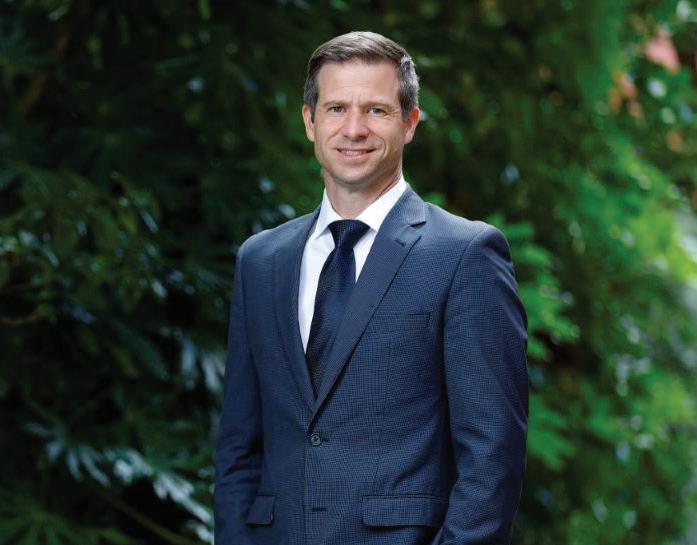
shortage, with thousands of roles unfilled across the country.
The Future Makers initiative aims to spark renewed interest, attract job seekers and school leavers, and shift the perception of modern manufacturing as a field full of opportunity, creativity, and impact.
At the heart of this campaign is a national platform featuring real stories from manufacturers across Aotearoa, a career guide for job seekers and students, a toolkit for businesses and educators, and a series of high-energy videos rolling out across social and digital channels.
This initiative will shine a spotlight on the incredible work being done in the sector and help Kiwis see just how vibrant and innovative it truly is.
In terms of that question posed by “JFK”, you’re already asking what you can do for your country and answering it in the same breath. And for that I thank you and commit to working alongside you, as part of a government keen to empower and enable you to do that even more in the months and years ahead.
It’s important to establish clear milestones, deliverables, and timelines in your contract. Negotiate SLAs that ensure ongoing support and maintenance post-integration.
In conclusion, system integrators play a vital role in the successful implementation of Industry 4.0 and automation technologies.
Their expertise in connecting disparate systems and ensuring seamless communication can transform your manufacturing operations, leading to improved efficiency, reduced downtime, and enhanced productivity.
Partnering with a skilled system integrator can help you unlock the full potential of your automated systems and achieve your Industry 4.0 goals.
If you have system integration projects in mind, find the right partner to deliver it Fulcrumnz.com

continued from Page 25
continued from Page 20
Yet, the long-term gains significantly strengthen both the workforce and the business, making the effort well worth it.
Competenz training advisor Phil Jones, who has worked with Convex for the past decade, says this forward-thinking approach is what sets the company apart.
“I feel very fortunate to be able to work with companies like Convex who are passionate about investing in training, even through adversity. Through these actions they are helping grow the New Zealand economy,” says Phil.
“The plastics sector has many unique traits and to find skilled workers isn’t just a matter of advertising. A lot of time and experience is required to understand and master the art of film production, printing, laminating and converting, so having a training pathway is attractive to jobseekers, and ensures not only business continuity, but also company growth and the ability to be innovative in the marketplace.”
The reality of today’s workforce is that employees don’t always stay in one place for life. But even when trained staff move on, the investment isn’t lost.
“The days of a job for life are almost gone, so you
Simplifie d h ousin g se le ction
A new system of housing designations makes it easier for users of the split plummer block housing SES to make selections based on industry standards common to Australia and New Zealand, where the market is familiar with the housing and component dimensions used on the blocks that correspond to the Standard. Features of the SES series include:
• Designations and housing dimensions adapted to the common Standard
• Extended range of designs compared with alternative range offerings
• Optimum lubricant supply through lubrication
holes in the upper housing section.
• Robust housing for aggressive environmental conditions, with strengthening around the fixing holes and high rupture loads providing improved strength and greater rigidity.
• Longer bearing operating life due to innovative housing design. This is achieved through optimised load distribution in the bearing.
• Markings in the upper housing section show the condition monitoring and lubricant supply connection points, making the housings are Industry 4.0 compliant
• Optimum lubricant supply and a grease outlet hole.
must expect that people will move away from your business. We need to be thinking holistically. You may train a person and then they may take these skills into the wider workforce and grow and improve in a different workplace.
‘” Ultimately the training you provide is growing the New Zealand economy which is good for everyone. If New Zealand businesses are prospering, as a nation we can prosper too,” Phil explains.
Aaron agrees that training is altruistic – the gains are felt by more than the employer and employee.
“Training empowers staff by equipping them with the skills to grow and develop within the company. It gives them confidence and purpose and definitely helps with staff retention. A large percentage of our staff have been here 10 years plus and some 20 and 30 years!
“Training helps solidify careers, provides direction, gives people knowledge to better themselves, and in turn has a positive influence on their family life and community interaction. I share the same view as our Director Owen Embling – in tough times, you cannot afford not to train your people.”
Connection option for lubricator and condition monitoring systems.
• Effective sealing solutions for different requirements
• Controlled egress of used lubricant due to standardised outlet hole. This is closed off with a screw plug in the delivered condition.
• Quick and easy alignment of the housing due to indentations that indicate the shaft and bearing centre
• Quick bearing replacement when combined with split spherical roller bearings from the extensive standard Schaeffler range, which avoids long downtime.
by Reid Hoffman (Author), Greg Beato (Author)

Tech visionary and co-founder of Manas AI, Reid Hoffman, shares his unique insider’s perspective on an AI-powered future, making the case for its potential to unlock a world of possibilities.
Superagency offers a roadmap for using AI inclusively and adaptively to improve our lives and create positive change. While acknowledging challenges like disinformation and potential job changes, the book focuses on AI’s immense potential to increase individual agency and create better outcomes for society as a whole.
Imagine AI tutors personalising education for each child, researchers rapidly discovering cures for diseases like Alzheimer’s and cancer, and AI advisors empowering people to navigate complex systems and achieve their goals.
Hoffman and co-author, tech and culture writer Greg Beato envision a world where these possibilities, and many more, become a reality.
Superagency challenges conventional fears, inviting us to view the future through a lens of opportunity, rather than fear. It’s a call to action – to embrace AI with excitement and actively shape a world where human ingenuity and the power of AI combine to create something extraordinary.
Reid Hoffman is a co-founder of LinkedIn, Inflection AI, and Manas AI. He is also host of the podcasts Possible and Masters of Scale.
From high-performance titanium sailing T-foils to fabricated bridges, speaker systems, metal sculptures and even sleep apnoea masks – the work of engineers influences every aspect of life, but is often considered the “most visible, invisible industry.”
When it comes to work-life choices it’s no surprise that engineering trades are often overlooked as they sit quietly in the background, overshadowed by building, plumbing and electrical trades. So how do we unlock engineering’s career potential— not just at the school level but as a clever career choice?

“Engineering trades are often the silent forgotten trades, but New Zealand is crying out for skilled engineers,”
Competenz General Manager Employer and Learner Services Toni Christie says.
“We have a skills shortage, coupled with economic uncertainty. In these times, career advisors, mid-life career changers and graduates should consider recession - and future-proofed engineering careers as a big advantage.”
People often have a narrow view of what an engineering career looks like. What many don’t realise is that engineering and related trades cover 11 different specialisations, everything from dairy systems to toolmaking.
Adds Toni, “If you enjoy working with your hands, figuring out how things work, and working with leading-edge technology, engineering trades offer a wide range of career pathways to explore.”
While engineering is often seen as a male-dominated sector, opportunities extend far beyond men in overalls. Women are also forging ahead in key
industries and engineering careers - women like Patsy Gadsby, who is making her mark at Black Steel Mobile (BSM), one of Auckland’s leading steel fabricators.

After trying her hand at a number of different careers, Patsy was inspired by her favourite fantasy television series, Avatar, to give engineering a go. She hasn’t looked back.
“One of the characters in the series was an engineer and she really inspired me to see a female doing a job that’s traditionally done by men,” says Patsy.
Fast forward a couple of years and Patsy is now over halfway through her engineering fabrication apprenticeship. She couldn’t be happier.
“The first day I walked into the BSM workshop I was like a scared little rabbit, but now I have so much more confidence and faith in my abilities. I can weld and make things from steel. I even made a set of stairs. It was really difficult and at the time I questioned whether I’d actually be able to finish it, but once it was done and installed I felt so proud. I’m really glad I watched that Avatar cartoon and it inspired me to become a steel fabricator!”
Patsy’s boss and BSM General Manager Steve Powell,
is passionate about attracting more people into the sector and has played a pivotal role in connecting school leavers to potential careers in fabrication engineering. In doing so, he is helping to ensure that New Zealand develops the skills we need for the future.
“Many people have no idea what engineering job opportunities are available in the big wide world,” says Steve. “By collaborating with Competenz we can meet with a group of people and explain what we are about, helping them realise that there’s more to trades careers than just building, electrical and plumbing opportunities.”
BSM has worked with Competenz in breaking down barriers to the industry through work experience placements, presentations, workshops, events and even a minibus tour.
“It’s a powerful way to build a talent pipeline. We may only get one or two people interested in what we do, but they’re the one or two we want to look closely at.”
Simon Smith, branch manager at leading refrigeration business CoSell, also hopes more people – including career advisors - will start to recognise the importance of engineering trades and promote them more actively.
“Refrigeration is a ‘ghost’ trade and one of the fastest growing industries. Exposure of the trade to potential apprentices would add value and depth to our industry resourcing issue,” says Simon.
It would also dish up fresh opportunities for those seeking a rewarding, diverse and hands-on career –and as Simon, Steve and Patsy can all attest, those who do pathway into this “most visible, invisible industry”, can see a bright future ahead.
The Government has selected 16 research projects for funding through the latest round of the MBIE-administered Te Pūnaha Hihiko: Vision Mātauranga Capability Fund. The Fund aims to strengthen capability, capacity, skills and networks between Māori and the science and innovation system and increase understanding of how research can contribute to the aspirations of Māori organisations and deliver benefit for New Zealand.
A total of $3.9 million (excl. GST) has been awarded across the 16 projects over the next two years. MBIE Contestable Investments Manager Alan Coulson says these projects focus on innovation, climate resilience and community organisation that will benefit communities and grow the Māori economy.
“Projects selected through this latest funding round aim to improve aquaculture, find innovative solutions to issues affecting our seas, and prepare for future extreme weather events. These are subjects that impact all of us and I look forward to seeing the outcomes and benefits of this work for our economy, environment and people nationwide,” he says.
MBIE Director Māori Science, Innovation and Technology Dr Willy-John Martin says improving the connection between science and Māori aspirations
enhances the impact of our research and builds greater potential for the future of New Zealand.
“The enhanced capabilities of today lead to the transformative scientific achievements of tomorrow. The science connections and outcomes created from these projects will further realise Māori potential and help to grow New Zealand’s prosperity.”
Projects supported through the 2025 Te Pūnaha Hihiko: Vision Mātauranga Capability Fund include:
Hatchery Technology Development for the Aquaculture of Freshwater Crayfish and Mussels – a project aiming to develop a freshwater aquaculture system to produce climate resilient food while researching how freshwater species important to Māori can be appropriately managed.
Kaitiaki whai whakamāramatanga: assessing seaweed bloom events for improved ecosystem management –a project looking at surging seaweed blooms, fuelled by nutrient overload, reduced herbivory, and climate change. This project will develop tools and provide access to technology to make informed decisions, build resilience, and guide future research into drivers and potential uses of stranded seaweed.
Enabling Māori communities to respond to and mitigate the impacts of frequent and severe extreme weather events. Ka Tuku Te Toro ki Uta, Ka Tuku Te Toro a Tai –This collaborative project aims to support the Makarika community and Mata to effectively respond to climate challenges. The goal is to build a model of climate resilience that can be adapted by other indigenous communities facing similar challenges.
Community based emergency management: Mobilising disaster science for effective Māori response and recovery - As climate disasters increase, Māori face growing threats to their lands, homes, people, and culture. The project will establish a Māori Disaster Practitioners
Increasing engineering and mātauranga capability to develop sustainable natural and built environment solutions for communities to prosper – This project will provide research, science and innovation to support engineering projects in a sector that seeks to embrace te ao Māori and support uptake and application of engineering by Māori communities.
“We just can’t find the right people.” It’s the go-to excuse for operational issues, stalled growth and missed deadlines. But let’s call it what it is: a smokescreen. The so-called “skills shortage” is a convenient distraction from a harder truth. For many businesses, they don’t have a people problem, it’s a management problem.
When we dig beneath the surface, the reality is clearer than we’d like to admit. If your business can’t attract or retain good people, it’s probably not the labour market letting you down. It’s likely something internal: your culture, your systems, or your leadership.
According to MBIE, 40% of roles in Tamaki Makaurau are classed as low-skilled, so let’s contrast a couple of businesses in the same region, competing to attract the same workers. One constantly complains about a lack of skilled staff. The other quietly gets on with hiring, training and growing its team. The difference isn’t luck. It’s leadership.
The successful business has designed itself to be a place people want to stay. It invests in onboarding, creates meaningful development pathways, and builds an environment where team members feel valued. Managers know their people. They communicate. They coach. They share the “why” behind the work.
These companies don’t have a secret recruitment strategy, they simply understand retention starts with trust, which is built through day-to-day leadership, not policies or perks. To get an idea of what this looks like in practice, it’s worth reading the Jones & Sandford Joinery case study on Callaghan Innovation’s website.
“We’ve been able to triple the output in this factory, same factory, four walls, same people, same machinery…”
Roger Jones | Jones & Sandford Joinery, New Plymouth
Source: Callaghan Innovation Lean Case Study
If you’re not attracting the right people, or you keep losing the ones you’ve got, it’s time to ask: What would it be like to work here? Would I want my kids to work here? What are we offering beyond a payslip?
The Toolbox Isn’t the Problem
We hear a lot about how today’s workers “aren’t job-ready.” But let’s be honest, was anyone truly job-ready on day one? The real issue isn’t that people lack tools or skills; it’s that many businesses have stopped investing in teaching them how to use the tools. They haven’t built environments where people can learn, fail and grow, taking the business with them.
We blame workers for not knowing, but rarely ask ourselves whether we’ve done a good job of showing them.
Are our processes documented? Do we give people
time to learn, to improve? Have we structured the first 30, 60, 90 days to set them up for success?
In most cases, the people we bring in want to do well. They want to contribute. But they need guidance. They need leadership that’s present, and yes, that takes time. It takes skill and patience. It takes managers who don’t just delegate tasks, but also delegate understanding and learning.
If your team doesn’t know what “good” looks like, that’s not their fault. That’s a systems issue.
Let’s talk about the fantasy hire.
That person with 10 years’ experience, triple-ticketed, knows your machinery inside-out, needs no support, is happy on mid-level wages and doesn’t ask too many questions? They don’t exist. And if they did, they’d be working for someone who treats them like gold, or running their own business.
Instead of waiting for unicorns, we need to change our expectations. What if, instead of hiring for perfection, we hired for potential? What if our goal were to create an environment where average people become great?
The best teams aren’t built by perfect recruitment. They’re built by leaders who develop talent and cultivate consistency. Talent isn’t found, it’s grown.
Let’s be blunt: the biggest shortage we face isn’t talent or technical skills. It’s effective and knowledgeable leadership.
Leadership that sets clear expectations. Leadership that supports people but also holds them accountable. Leadership that cares enough to ask why something went wrong, rather than just blaming the individual. In manufacturing, leadership isn’t just about hitting output targets. It’s about creating a system where every person, from the apprentice to the plant manager, knows what success looks like, has the tools and time to succeed and feels part of something bigger than themselves.
That doesn’t happen by accident. It happens by design.
Too often, businesses promote their best technical operators into leadership roles with zero leadership training. We assume that because someone was a great technician, they’ll be a great manager. But leadership is its own craft, one that must be taught, supported and mentored.
If we invested in leadership development the way we invest in capital equipment, we’d see fewer “skills shortages” and more thriving workplaces.
The Good News - It’s Fixable
Here’s the upside. If the problem is leadership, it’s something you can control.
You don’t need to wait for government policy changes. You don’t need to rely on immigration settings. You don’t need to wish for better schooling.
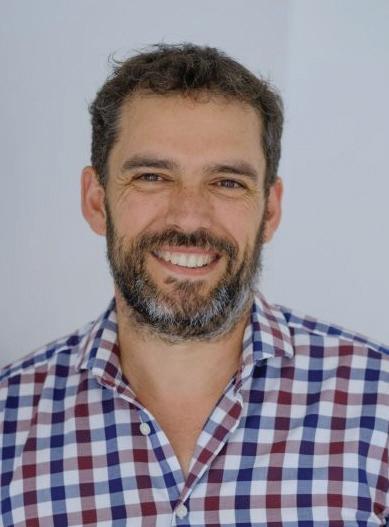

You just need to start with what’s in your hands: your culture, your people, your systems and your mindset. Start by asking:
• Do we know how to onboard well?
• Do our managers know how to lead, not just manage?
• Do we celebrate progress, or only point out mistakes?
• Do people leave exit interviews saying, “It wasn’t the job, it was the boss”?
In today’s labour market, where we are competing internationally to attract and retain talent, your real advantage isn’t your machinery, your building, or your brand. It’s your people, and more specifically, how you lead them.
Build a workplace where people feel respected and supported, you’ll be amazed at the talent you attract. Invest in growing your team from within and you’ll create the very skills you claim to be missing. Step up as a leader, and you’ll discover what looked like a shortage was just a signal; a prompt to lead better.
The skills are out there. The potential is out there. The real question is: Is your business worth joining for the long term?
If you’re ready to start addressing the real shortage, organisations like the EMA offer tailored leadership and capability training for manufacturers. You don’t need to go it alone. Start at https://ema. co.nz/training
“We’ve been able to triple the output in this factory, same factory, four walls, same people, same machinery…”
Roger Jones | Jones & Sandford Joinery, New Plymouth
Source: Callaghan Innovation Lean
Case Study
